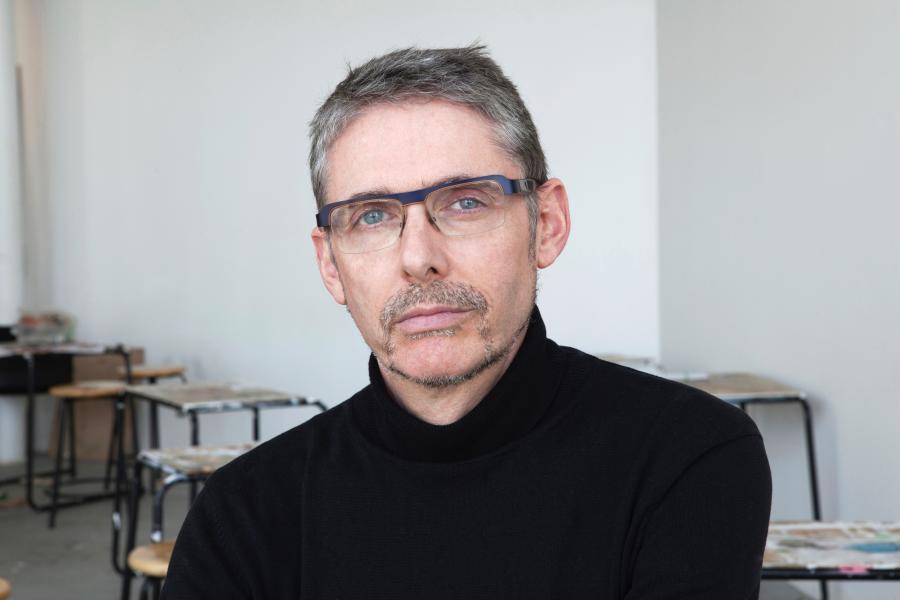324 ARTlab
University of Manitoba
(Fort Garry Campus)
Winnipeg, Manitoba R3T 2M6
T. 204-474-7255
E. oliver.botar@umanitoba.ca
Education
- PhD Art History, University of Toronto, 1998 Major: 18th-20th Century Western Art/Architecture. Minor: Ancient Greek and Hellenistic Art/Architecture. Dissertation: Prolegomena to the Study of Biomorphic Modernism: Biocentrism, László Moholy-Nagy's ‘New Vision’ and Ernő Kállai's Bioromantik https://tspace.library.utoronto.ca/handle/1807/16578
- MA, Art History, University of Toronto, 1987
- MSc, Urban and Regional Planning, University of Toronto, 1985 Thesis: Modernism in Hungarian Urban Planning, 1908-1938
- Studies in Art History, Eötvös Loránd University, Budapest, 1979-80 and 1984-85
- BA Honours (Magna cum Laude) University of Alberta, 1979 Major: Urban Geography. Minors: Philosophy, English
Research
Drawing on his pre-Art Historical training in Urban Geography, English, Philosophy, and Urban Planning, as well as his family background, study in Hungary, knowledge of languages, early training and practice as a photographer, interest in experimental music, and commitment to environmentalism, Prof. Botar’s work is deeply trans-disciplinary and trans-national. As such, it encompasses the histories of fine art, architecture, photography, urban planning and design, as well as the history of ideas.
Botar has focused his research on Biocentrism and Modernism in the early-to-mid 20th-century, and on early-to-mid 20th century Central European Modernism (particularly the work of László Moholy-Nagy, the Bauhaus, and Hungarian Modernism) and is a long-standing member of the Historians of German, Scandinavian, and Central European Art. Within these research focuses, he has often concentrated on the origins of art in alternative (“new”) media, and he is widely considered to be one of the foremost scholars of the work of Moholy-Nagy. He has also worked in the history of Canadian Modernism, with special interests in Canadian Structurism, Hungarian-Canadian Modernists, Bauhaus-Canada connections and the history of Settler art in Winnipeg/Treaty One Territory.
Prof. Botar has authored numerous books, articles, reviews and exhibition catalogues. His scholarship and curatorial work have been reviewed and cited extensively in the literature. He has lectured throughout North America, Europe and Japan at institutions such as the University of Alberta, Amherst College, the Canadian Centre for Architecture, Concordia University, Eötvös Loránd University (Budapest), Garage (Moscow), the Getty Research Institute (Los Angeles), the Guggenheim Museum (New York), Harvard University, the Hochschule Bildende Kunst Hamburg, the University of Indiana (Bloomington), National Museum of Modern Art (Kyoto), Ludwig Museum (Budapest), the Metropolitan Museum, the Museum of Modern Art, the Université de Montréal, the Moholy-Nagy University of Art and Design (Budapest), Muffathalle (Munich), the Art Gallery of Ontario, Princeton University, Rutgers University, Queens University, Saitama University (Tokyo), the Tate Modern, the University of Texas (Dallas), the University of Toronto, the University of Vienna, Virginia Polytechnic Institute, and Yale University. He has presented regularly at the College Art Association, Congress of the Humanities and Social Sciences, and Society for Literature, Science and Art. During the pandemic, he gave online lectures for the Winnipeg Art Gallery, the Hungarian Cultural Centre (New York) and Moholy-Nagy University of Art and Design. Dr. Botar has organized, co-organized, chaired and co-chaired a good number of conference sessions, symposia and conferences.
Botar’s 1998 dissertation originally focussed on the origins of Biomorphic Modernist style in early-to-mid 20th-century art, architecture and photography. This developed into a ground-breaking study of the ways in which “Biocentric” worldviews informed Modernist creative practice. While controversial when first proposed, his work has altered the way we think of Modernism, facilitating the reclamation of nature-centric Modernism as a basis for future study. His PhD dissertation and the anthology Biocentrism and Modernism are considered basic texts in the field.
Born in Toronto to Hungarian refugee parents, Dr. Botar has had an abiding interest in Hungarian and Hungarian-Canadian studies and is past President of the Hungarian Studies Association of Canada. He serves on the Editorial Board of Hungarian Studies Review, a journal for which he has guest edited four special issues on Hungarian art, including an issue on the work of László Moholy-Nagy (with Hattula Moholy-Nagy). He has been active in the University of Manitoba-University of Szeged Partnership Program since its inception. He has been non-resident Curator of Hungarian Art at the Salgo Trust for Education (New York) since 1996.
Since arriving in Winnipeg in 1996, Prof. Botar has become interested in the history of local Modernisms, employing settler-colonial theory in his teaching and writing since 2016. He is currently working on a book on Settler art in Winnipeg/Treaty One Territory, and a monograph on Winnipeg for the Art Canada Institute. He has facilitated the process of reconciliation and the Indigenization of the Art History programs, serving on MA and PhD committees of Indigenous scholars and spearheading the initiative to hire an Indigenous Art Historian.
Born of a desire to communicate with a wide public and regarding exhibitions as a crucial form of publication and knowledge mobilization, Botar has had an active curatorial practice in Canada, the US, Germany and Hungary. He has lectured, conducted tours and trained docents in association with these exhibitions. He has acted as a consultant on exhibitions such as Moholy-Nagy: Future Present (Art Institute of Chicago, Guggenheim Museum, Los Angeles County Museum of Art); Into the Light: Lyonel LeMoine FitzGerald (McMichael Canadian Art Collection, Winnipeg Art Gallery) and Dimensionism: Modern Art in the Age of Einstein (Mead Art Museum, Amherst College, Berkeley Art Museum & Pacific Film Archive, Jane Voorhees Zimmerli Art Museum, Rutgers University). He was interviewed extensively for the film The New Bauhaus (Alysa Nahmias, director), which premiered at the Architecture and Design Film Festival, New York (16.10.2019). He has given numerous interviews to the press concerning his exhibitions and has received extensive press coverage for them.
Dr. Botar has been a Junior Fellow at Massey College (University of Toronto), a Resident Scholar at the Canadian Centre for Architecture (Montreal), a Fellow at the Institut für Literaturwissenschaft (Berlin), has participated in a residency at the Cape Cod Modern House Trust (Wellfleet, MA) and is the recipient of multiple research grants from the Social Sciences and Humanities Research Council of Canada among other funders. His monograph A Bauhausler in Canada: Andor Weininger in the 50s (Zab Hobart, designer) was awarded the Melva J. Dwyer Award of ARLIS in 2010. Prof. Botar has received Merit Awards from the UM and the UM Faculty Association for the Weininger and Moholy-Nagy projects. Botar takes design very seriously, working whenever possible (often repeatedly) with recognized designers such as Hobart (Toronto, Evan Marnoch and Marcelle Lussier (Urbanink, Winnipeg), Kirk Warren (Winnipeg) and Lars Müller (Zurich).
In addition to the monograph on Settler art in Winnipeg, Dr. Botar is currently working with three colleagues on an anthology about Dada in Central and Eastern Europe and on a virtual version of his exhibition Bauhaus (Canada) 101.
Teaching
Prof. Botar has taught in the Art History programs of the School of Art since 1996, and has been involved in two curriculum renewals. Prior to that, he taught at the University of Toronto, the University of Guelph and Queens University.
In addition to the first-year survey of world art, he has taught the 2000-level survey of modern art. At the 3000-level, he has focussed his teaching on Central European (mainly German) Modernism, Canadian art since World War II, Prairie Modernism, mid-to-late 19th French century art, contemporary art, and the history of art in alternative/new media. He has also taught a course in the history of photography as well as the history of design for the Interior Design program of the Faculty of Architecture. Botar developed the School of Art courses on contemporary art and on art in new media – the latter one of the first of its kind in Canada. He has endeavoured to broaden the traditional medial hierarchy in all his teaching and has worked towards more inclusivity with respect to gender and sexuality.
Dr. Botar has developed and taught 4000-level seminars on topics such as nature and art in the 20th century, the Bauhaus, Bauhaus-Canada connections, László Moholy-Nagy, Central and East-European avant-gardes, Manitoba Modernisms, and the history of art in Treaty One Territory.
Whenever possible, Prof. Botar has taught using original works of art, so that students get a sense of the materiality of what they are studying. He has built up a collection of VHS tapes, CD-Roms and DVD’s of otherwise unavailable Canadian and international artists’ videos, performance documentation and interactive digital art using grants from the School of Art Endowment Fund. This has entailed classes at the Winnipeg Art Gallery, Video Pool, Plug In ICA and other exhibition spaces in the city. He has made intensive use of the School of Art and University collections, including regular classes held in the Collections Gallery of the School of Art Gallery – a teaching gallery he conceived of during the planning of ARTLab. He has curated exhibitions in the School of Art Gallery (known as Gallery 111 prior to the move to ARTLab) – didactic shows drawing on the Gallery’s, the University’s and his own collections: Bauhaus (Canada) 101 (2020) was curated for a seminar marking the centenary of the Bauhaus. From the Bauhaus to Hour Zero: Art in Germany Between the Wars (2019) was produced for a course in German art between the wars. From Bauhaus to Our House in Etobicoke: Andor Weininger in the 50s (2004) was based on the donation of work by Bauhaus alumnus Andor Weininger to the School of Art’s collection that supported “Canadian Art Since World War II.” Also supporting that course were That 70s Show (2002 –2003), The 60s (1998) and Modernism at Play: Canadian Art of the 1940s and 1950s (1997). The latter three shows involved the students in the curatorial process. Building on this, Botar has worked to establish a curatorial trajectory in the Art History program: he has taught the introductory 3000-level course (developed with the late Prof. Cliff Eyland) and the advanced seminar in curatorial studies (developed by Prof. Botar).
Dr. Botar was instrumental in establishing the graduate program in Art and Architectural History, has taught many graduate students from the Faculty of Architecture in his 4000-level seminars, and has served on MA, MFA, MArch and PhD committees, or as external reader/examiner both within and outside the School of Art at UofM, as well as in the United States and Europe. In 2007 he acted as Guest Professor at the Finnish National Summer School in Graduate Art History and the University of Urbino, Italy (2023).
Prof. Botar has actively mentored both his Art History and Studio students. Thus, he has served on many BFA thesis committees, and he was instrumental in procuring the Drache Scholarship in Art History. Prof. Botar’s Art History mentees have gone on to the best graduate Art History programs in Canada and the UK, many of them choosing thesis topics inspired by work they began in Prof. Botar’s classes. These include the University of Alberta, Carlton, Concordia, Queens, University of Toronto, and the University of Victoria, as well as the Courtauld Institute (London), University of East Anglia (Norwich), Leeds, Oxford, St. Andrew’s, and the University of York. Several have gone on to PhD programs such as the University of London and Columbia. Four of his mentees have been interns at the Peggy Guggenheim Foundation in Venice, while others have landed internships and jobs at the Costume Museum of Canada, the Guggenheim Museum, Plug In ICA, Video Pool and the Winnipeg Art Gallery.
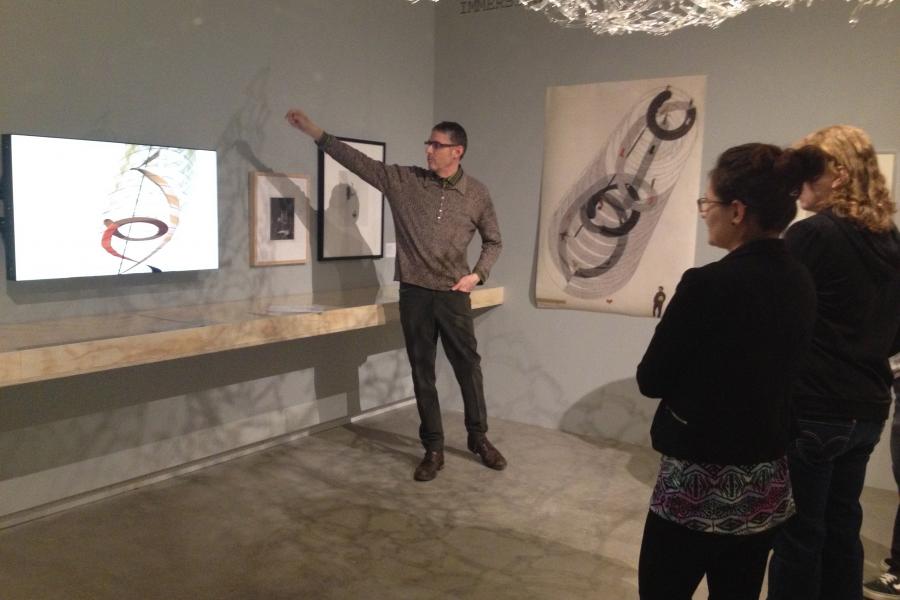
Sensing the Future: Moholy-Nagy, Media and the Arts
Spring 2014
Photographer unknown.
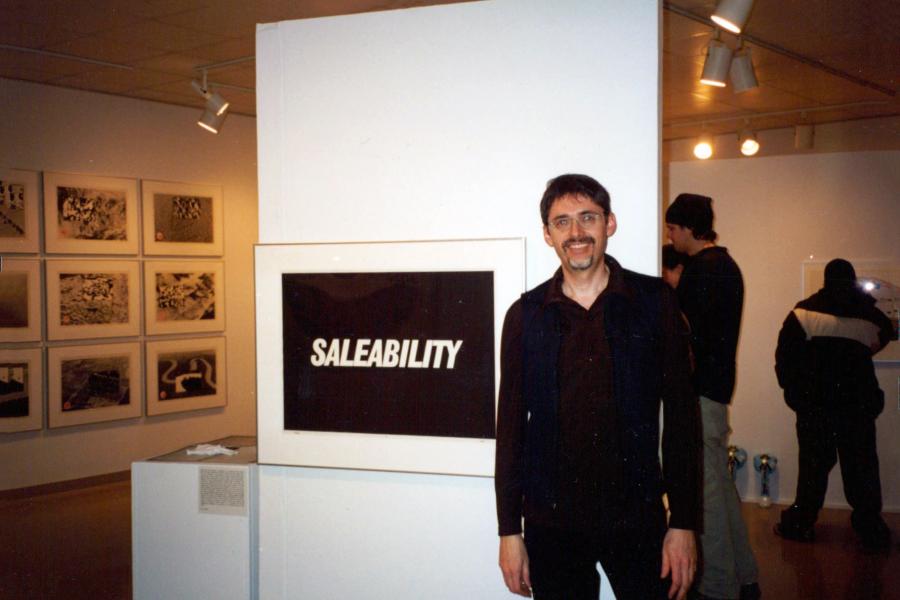
Class Project Exhibition for: FAAH 3270 Canadian Art Since World War II
School of Art, Gallery 111
November 1997

Class Project Exhibition for: FAAH 3270 Canadian Art Since World War II
School of Art, Gallery 111
November - December 1998
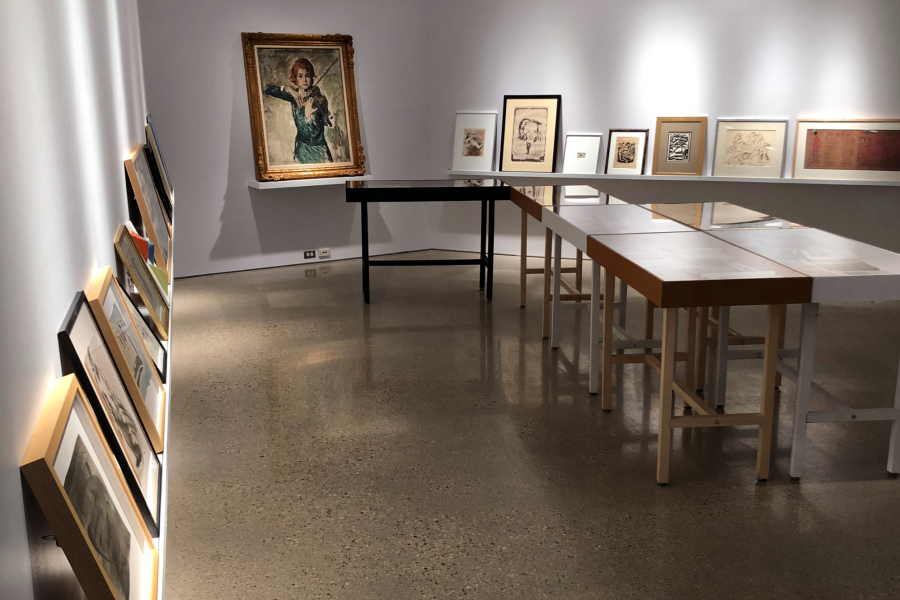
Didactic Exhibition for: FAAH 3160 German Art Between the Wars
School of Art Gallery
April 2019
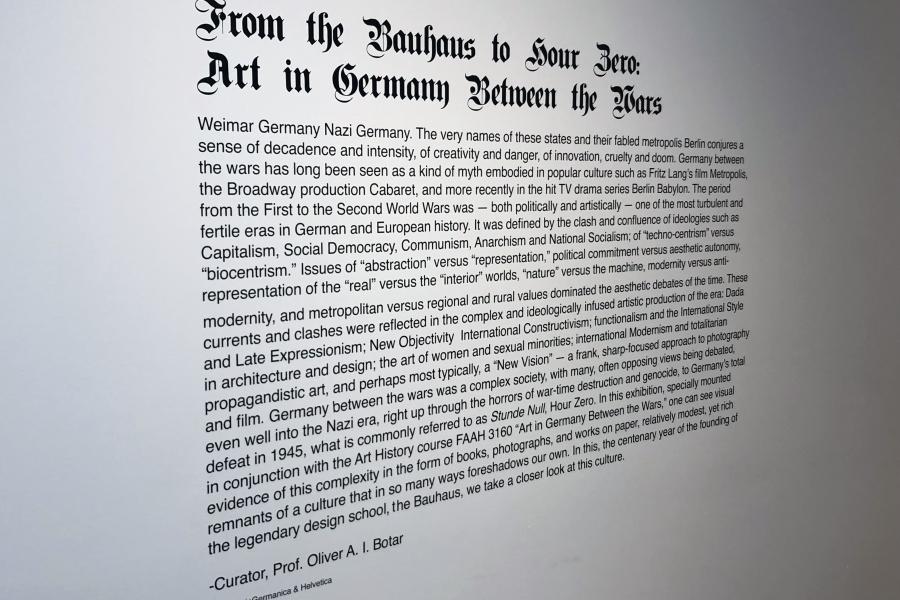
Didactic Exhibition for: FAAH 3160 German Art Between the Wars
School of Art Gallery
April 2019
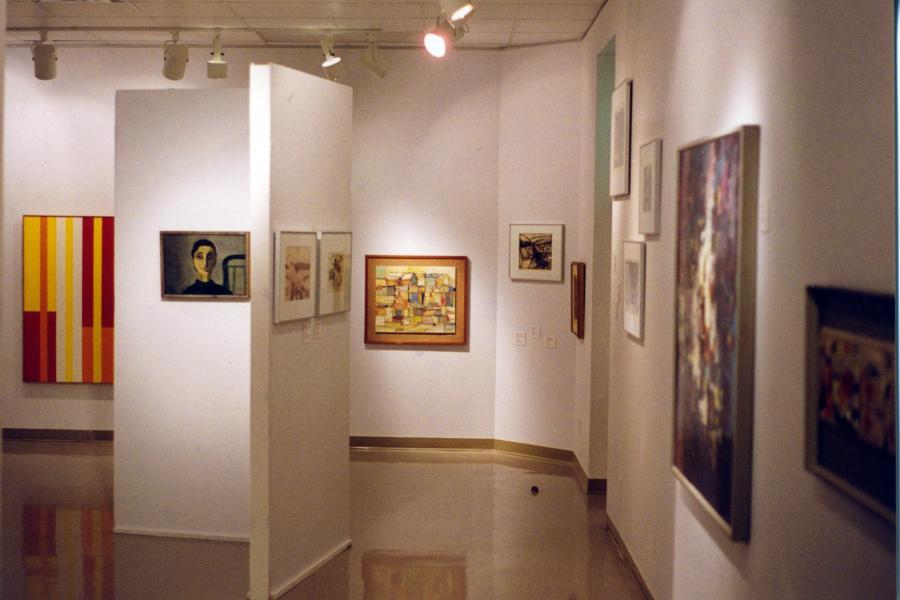
Class Project Exhibition for: FAAH 3270 Canadian Art Since World War II
School of Art, Gallery 111
November 1997
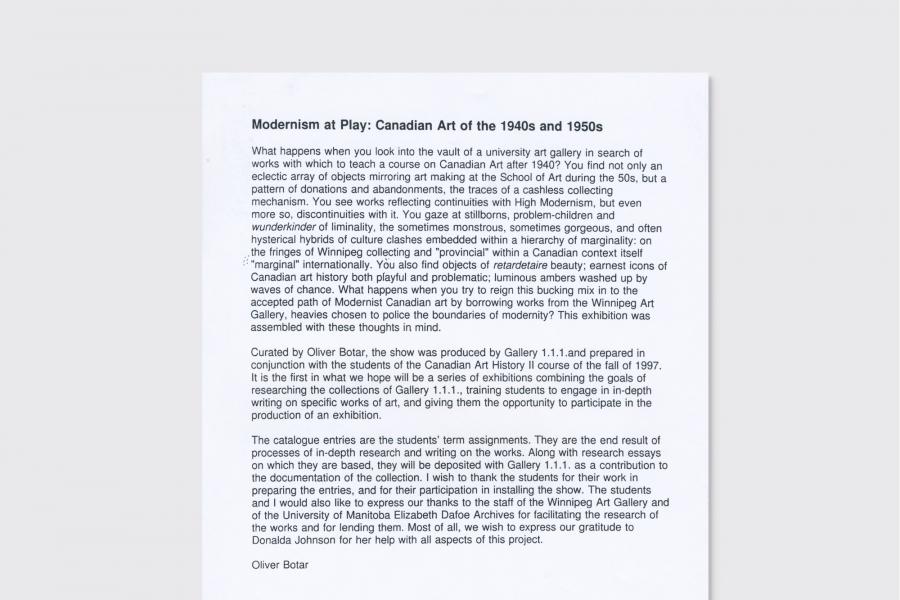
Service
Prof. Botar has helped build the collections of the School of Art Gallery and the Archives and Special Collections of UofM, bringing in numerous donations of art and archives, including the bulk of Andor Weininger’s Canadian production, Manitoba Modernist artists and contemporary Manitoba women artists. He has served as Co-Chair and Chair of the Acquisitions Committee of the Gallery. He also arranged for donations of Weininger’s work to the Art Gallery of Ontario and the Robert McLaughlin Gallery in Oshawa. Dr. Botar has organized or co-organized a speaker series at Massey College (University of Toronto) and the School of Art. He served as the School of Art Senate representative from 2014 to 2020, on the Board of the University of Manitoba Institute of the Humanities on the Committee of the Central and Eastern European Studies Program since 1996. He has peer-reviewed many scholarly articles and monographs for major journals and publishers, has reviewed exhibitions and books, has acted as an outside assessor on tenure committees at North American universities, and has served on juries, including for the National Capital Commission in Ottawa. He has participated in the review of Art History, Studio and Art Conservation programs at two Canadian universities. He was a founding member and spokesperson for the Save the Eaton’s Building Coalition. and has produced position papers on other attempts to have buildings listed, most recently the St. Boniface Civic Centre (by Etienne Gaboury). He served on the Acquisitions Committee of the Winnipeg Art Gallery, the Winnipeg Art Council’s Public Art Committee, and as Vice-President of Groundswell New Music Series. Dr. Botar has facilitated two major donations of art and decorative art to the Winnipeg Art Gallery from The Salgo Trust for Education.

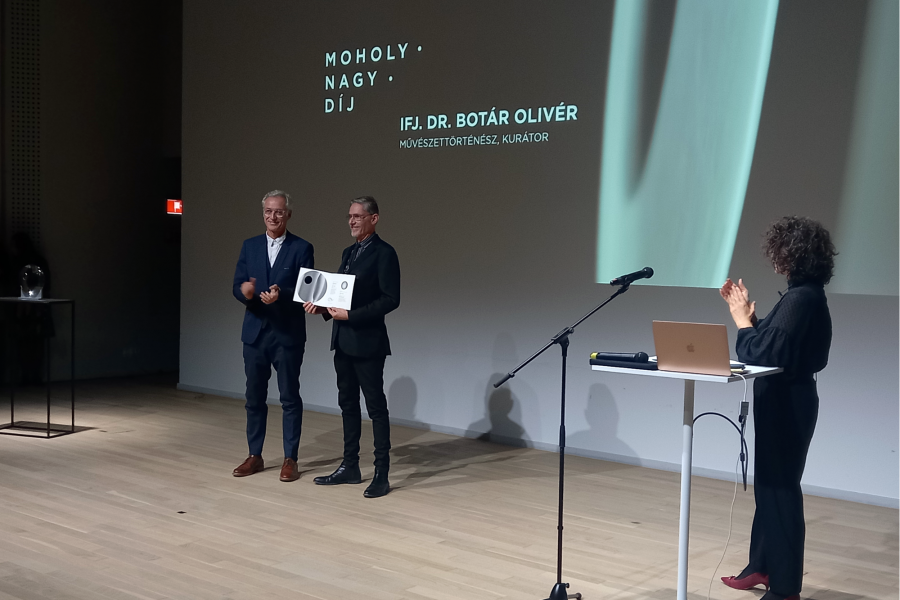
Selected Monographs, Anthologies, and Exhibition Catalogues:
(editor in chief) Cannibalizing the Canon: Dada Techniques in Central and Eastern Europe, Leiden: Brill, 2023. An anthology of 23 essays. Editorial team: Irina Denischenko (Georgetown University), Gábor Dobó (Petőfi Literary Museum–Kassák Museum), Merse Pál Szeredi (Petőfi Literary Museum–Kassák Museum).
Sensing the Future: Moholy-Nagy, Media and the Arts, Zurich: Lars Müller, 2014. (German-language edition: Sensing the Future: Moholy-Nagy, die Medien und die Künste.)
“An Art at the Mercy of Light” Recent Works by Eli Bornstein, Saskatoon: Mendel Art Gallery, 2013.
Telehor (Brno), no. 1 (1936) (facsimile edition, with essay). (Dr. Klemens Gruber, University of Vienna, co-editor and co-author). Zurich: Lars Mueller, 2013.
Biocentrism and Modernism, (Isabel Wünsche, Jacobs University, Bremen, co-editor). Farnham: Ashgate, 2011.
A Bauhausler in Canada: Andor Weininger in the 50s. Oshawa: The Robert McLaughlin Art Gallery, 2009.
Természet és technika: Az újraértelmezett Moholy-Nagy 1916-1923 [Nature and Art: Moholy-Nagy Reconsidered]. Revised edition of Technical Detours. Budapest: Vince, 2007.
Technical Detours: The Early Moholy-Nagy Reconsidered, New York: The Graduate Center, City University of New York, 2006.
Julius Marosan: Art in Emigration, 1957-1993, Budapest: Műcsarnok/Kunsthalle, 1994.
Tibor Pólya and the Group of Seven: Hungarian Art in Toronto Collections, 1908-1949. Justina M. Barnicke Gallery, University of Toronto, 1989. (With Phileen M. Tattersal)
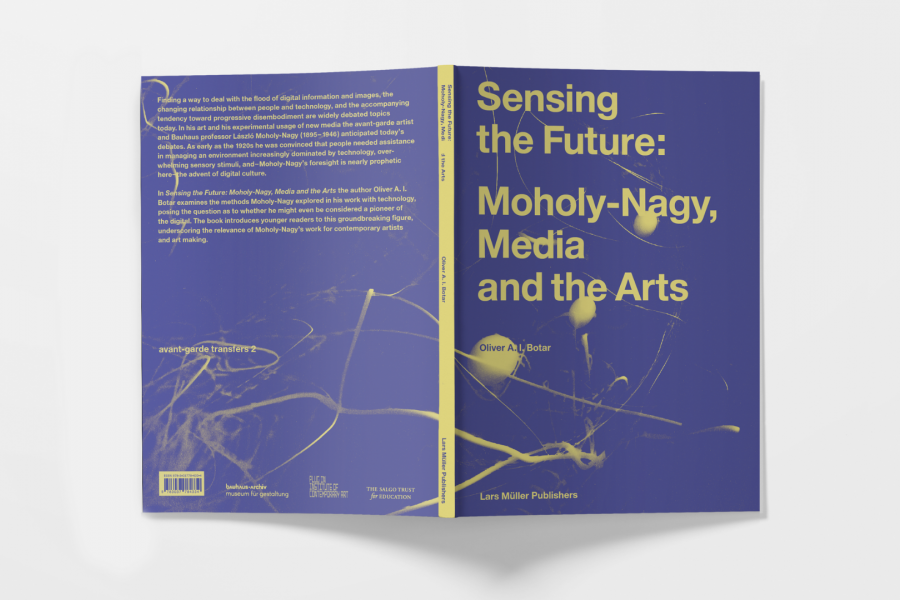
Dr. Oliver Botar
Design:Lars Müller, 2014.
Second printing 2023.
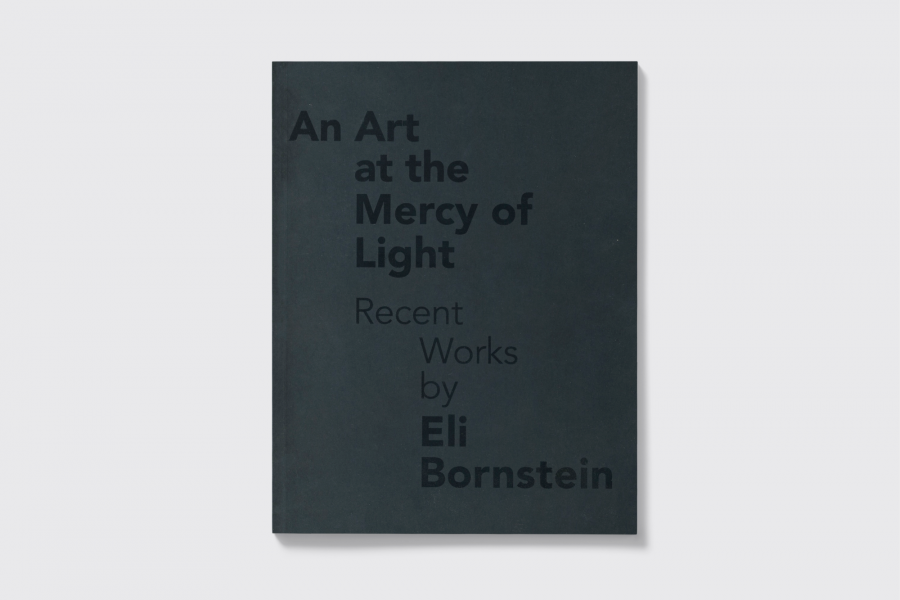
Recent Works by Eli Bornstein
Saskatoon: Mendel Art Gallery, 2013.
Design: Zab Hobart
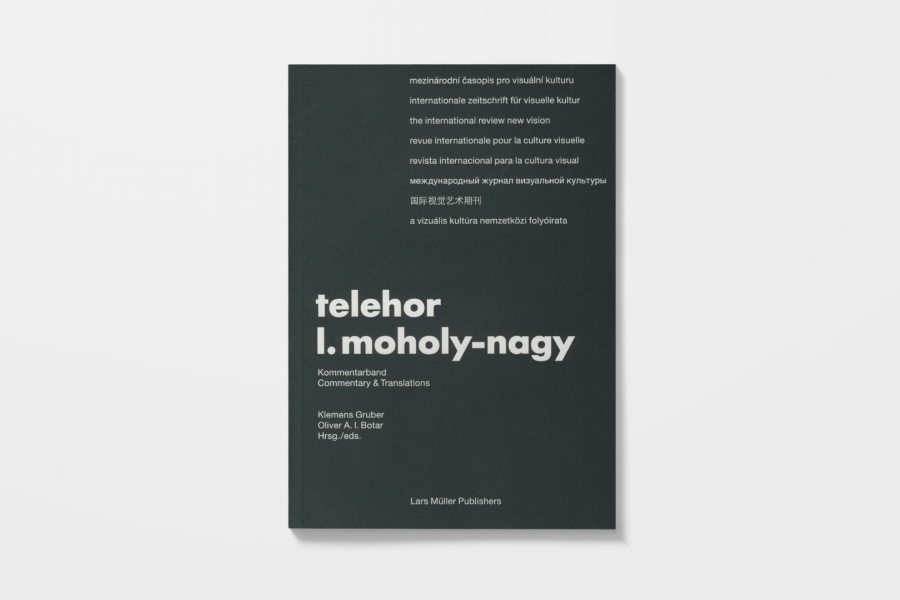
Design: Lars Müller, 2013.
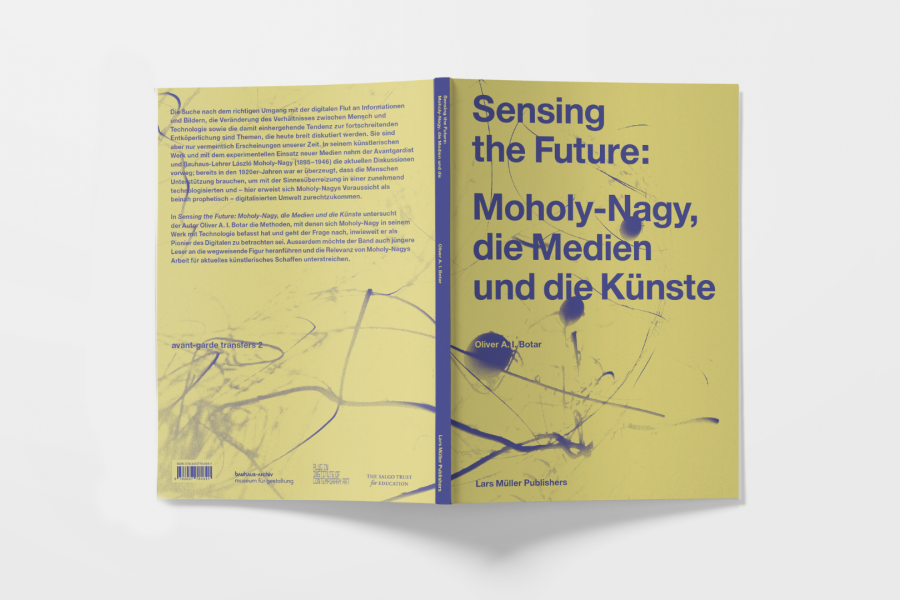
Dr. Oliver Botar
Design: Lars Müller, 2014
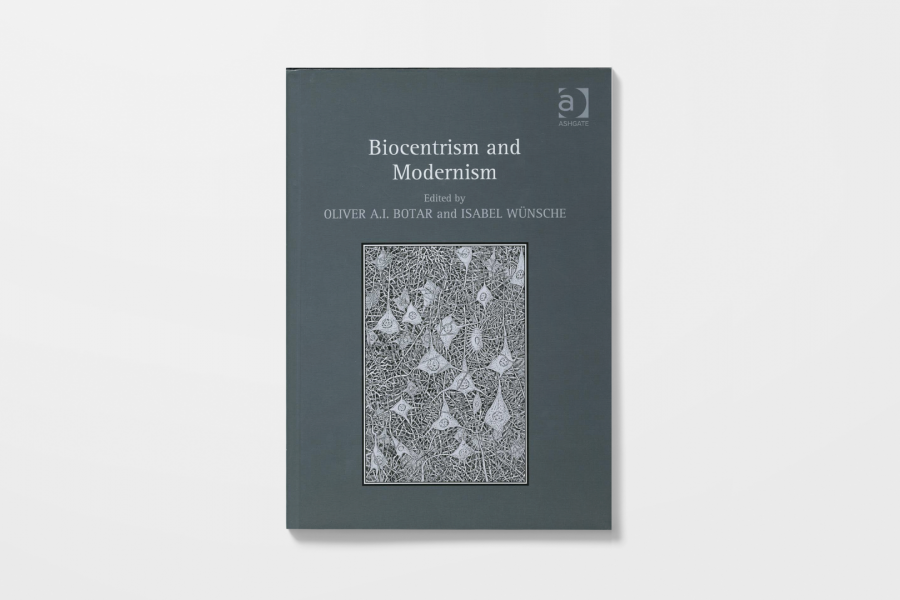
Farnham: Ashgate, 2011.
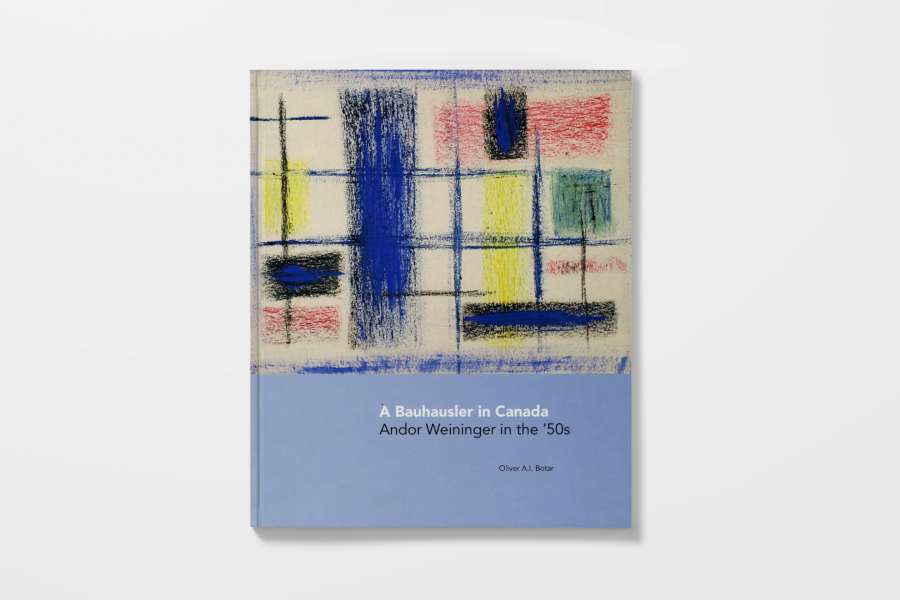
Oshawa: The Robert McLaughlin Art Gallery, 2009.

Revised edition of Technical Detours. Budapest: Vince, 2007.
Selected Articles and Chapters
“Directing the ‘Biocentric’ Lense at the Bauhaus,” in: The Bauhaus and the Landscape, Lars Hopstock and Sebastian Feldhausen, eds. Berlin: Kerber, 2023.
“Dadá, not Dáda: Moholy-Nagy in Berlin, 1920–1921,” in: Cannibalizing the Canon: Dada Techniques in Central and Eastern Europe, Leiden: Brill, 2023. An anthology of 23 essays. Editorial team: Oliver Botar (Editor in Chief), Irina Denischenko (Georgetown University), Gábor Dobó (Petőfi Literary Museum–Kassák Museum), Merse Pál Szeredi (Petőfi Literary Museum–Kassák Museum).
Articles in: K.G. Saur Verlag, eds., Allgemeines Künstlerlexikon: Die bildende Künstler aller Zeiten und Völker. Leipzig/Munich: K.G.Saur Verlag, Gordon Webber, Esther Warkov, Elizabeth Willmott, and Robert Zend, 2021-22.
“Untitled (Landscape): Arthur Lismer,” in: Ian A.C. Dejardin and Sarah Milroy, eds., A Like Vision: The Group of Seven and Tom Thomson, Kleinburg, ON: The McMichael Canadian Art Collection, 2020-21, 198-99.
Nine contributions to: Sandra Bartoli, ed., Licht Luft Scheiße: Perspektiven auf Ökologie und Moderne [Light Air Shit: Perspectives on Ecology and Modernity]. Berlin: Adocs, 2020.
“Plumbing the Depths: Introduction to a Dissertation on Biomorphic Modernism and Biocentrism,” The Structurist, no. 51-52 (2019-2020), 14-26.
“The Pleasures of Sensory Derangement and its Uses in the Art of the Early Twentieth-Century Avant-Garde,” in Ruth Anderwald, Karoline Feyertag and Leonhard Grond, eds., Dizziness: A Resource. Berlin: Sternberg Press/Vienna: The Academy of Fine Arts, 2019.
“Moholy-Nagy: Film Architect,” in: Aki Bekcmann and David Krems, eds., “Noch Fragen? Festschrift für Klemens Gruber,“ Maske und Kothurn (Vienna) vol. 65, nos. 1-2 (2019).
“Feelings of Voluptousness: FitzGerald’s Erotic Biocentrism” in: Sarah Milroy, Ian A. C. DeJardin and Michael Parke-Taylors, eds., Into the Light: Lionel LeMoine FitzGerald. McMichael Canadian Art Collection/Winnipeg Art Gallery, 2019.
“László Moholy-Nagy and Sensory Awareness,” In: Dietmar Lupfer, ed., Sensefactory, Munich: Muffatthalle, 2019, unpag.
“Medial Shifts” and “László Moholy-Nagy” in: Petra Eisele, Isabel Naegele and Michael Laifach, eds.,Moholy-Nagy and the New Typography A-Z, Mainz: Designlabor Gutenberg and Berlin: Kunstbibliothek Staatliche Museen zu Berlin (with Verlag Kettler), 2019.
“Photogram. Exercise 28: Teacher: László Moholy-Nagy,” In: Friederike Hollaender and Nina Wiedemeyer, eds., Original Bauhaus: Workbook. Munich: Prestel; Berlin: Bauhaus-Archiv Museum für Gestaltung, 2019.
“Expressionism in Canada and the United States” (with Herbert R. Hartel, Jr.) Isabel Wünsche, ed., Routledge Companion to World Expressionisms. London: Routledge, 2019.
“László Moholy-Nagy I biocentryzm” [László Moholy-Nagy and Biocentrism], Konteksty, Special Issue: “Awangarda i Organiczność,” 73, no. 4 (#327) (2019), 136-144.
Charles Sirató and the Dimensionist Manifesto,” Vanja Malloy, ed., The Dimensionist Manifesto. Cambridge MA: The MIT Press, 2019.
“László Moholy-Nagy” and “Biomorphism,” entries for: Routledge Encyclopedia of Modernism. New York and London, 2016/2019.
“Sébastien Aubin: A Rooted Future Orientation,” in: Sébastien Aubin: No Brighter in the Middle, Winnipeg: School of Art, University of Manitoba, 2018, 6-7.
“Lucia Moholy’s Fotografische Arbeiten der 20er Jahre: Eine Nicht-Künstlerin Erschafft Kunst,” Material und Architektur: Lucia Moholy und die Fotografie am Bauhaus (Berlin: Derda, 2016).
“Bátran megnyítni a művészétttörténet kapuit” [Bravely Opening the Gates of Art History], in Eszter Földi and Orsolya Hessky, eds., ‘Bátran megnyítni a művészétttörténet kapuit: Tanulmánykötet Bajkay Éva 75. Születésnapjara [Festschrift for Éva Bajkay’s 75th Birthday]. Budapest: Hungarian National Gallery, 2018, 7-8.
Contribution to Csilla Markója, István Bárdoly and Gábor Pataki, eds., Enigma (Special Festschrift issue for Prof. Krisztina Passuth], vol. 24, no. 90, 2017, 5-7.
”The Biocentric Bauhaus,” Charissa N. Terranova and Meredith Tromble, eds., The Routledge Companion to Biology in Art and Architecture. New York and London, 2016.
“Le dérèglement sensoriel ou la formation des sens pour la modernité : l’art de l’ilinx et l’avant-garde européenne” and “László Moholy-Nagy et la vue aérienne” in: Angela Lampe, ed., Vues d’en Haut, Centre Pompidou-Metz, 2013.
“Moholy-Nagy and Biocentrism” in Toshino Iguchi, ed., Moholy in Motion, Kyoto: The National Museum of Modern Art, 2011.
“Defining Biocentrism” in: Oliver Botar and Isabel Wünsche, eds., Biocentrism and Modernism, Farnham, U.K.: Ashgate, March 2011.
“László Moholy-Nagys Synthesekonzept von 1922” in: Annemarie Jaeggi, Philipp Oswalt and Hellmut Seemann, eds., bauhaus global. Gesammelte Beiträge der Konferenz bauhaus global vom 21. bis 26. September 2009. Berlin: Gebr. Mann Verlag, 2010.
“Modernism and Biocentrism: Understanding Our Past in order to Confront Our Future,” The Structurist, Toward an Earth-Centered “Greening” of Art and Architecture, No. 49/50 (2009-2010).
“György Kepes’ ‘New Landscape’ and the Aestheticization of Scientific Photography” in: Nina Czeglédy and Róna Kopeczky, eds., The Pleasure of Light: György Kepes, Frank Malina, Budapest: Ludwig Museum of Contemporary Art, 2010.
“Taking the Kunst out of Gesamtkunstwerk: Moholy-Nagy’s Conception of the Gesamtwerk” in: László Moholy-Nagy: The Art of Light, Madrid: La Fabrica Editorial.
Interview with Frank Mikuska conducted and edited by Oliver Botar in conjunction with the Frank Mikuska exhibition, Gallery 111, UofM, 2010. http://www.umanitoba.ca/schools/art/content/galleryoneoneone
“The Roots of László Moholy-Nagy’s Biocentric Constructivism” In Eduardo Kac, ed., Signs of Life: Bio Art and Beyond. Cambridge, MA: The MIT Press, 2007.
“The Hidden Landscape of Winston Leathers and Wayne Foster” in: Robert Epp, ed., Winston Leathers: In the Moment, Gallery 111, UofM, 2005. http://www.umanitoba.ca/schools/art/content/galleryoneoneone
“László Moholy-Nagy’s ‘New Vision’ and the Aestheticization of Scientific Imagery in Weimar Germany,” Science in Context: Writing Modern Art and Science, 17, no. 4 (December 2004).
“Lajos Kassák, Hungarian ‘Activism’ and Political Power,” Canadian American Slavic Studies, vol. 36, no. 4 (Winter 2002).
“Notes Towards a Study of Jakob von Uexküll’s Reception in Early Twentieth-Century Artistic and Architectural Circles” in: Kalevi Küll, ed., “Jakob von Uexküll: A Paradigm for Biology and Semiotics”, a special issue of Semiotica, vol. 134, no. 1-4 (2001).
“From Avant-Garde to ‘Proletcult’ in Hungarian Émigré Politico-Cultural Journals, 1922-1924” in: Virginia H. Marquardt, ed., Art and Journals on the Political Front: 1910-1940, Gainesville: University of Florida Press, 1997.
“Ernő Kállai and Wilhelm Kolle: Science and Art in Weimar Germany,” Acta Historiae Artium 42 (1996).
“An Activist-Expressionist in Exile: László Moholy-Nagy 1919-21” in: Belena Chapp, ed. László Moholy-Nagy: From Budapest to Berlin, 1914-1923. Newark: University Gallery, University of Delaware, 1995.
“From the Avant-Garde to ‘Proletarian Art’: The Émigré Hungarian Journals Egység and Akasztott Ember, 1922-23." Art Journal (Spring 1993).
Articles in: K.G. Saur Verlag, eds., Allgemeines Künstlerlexikon: Die bildende Künstler aller Zeiten und Völker. Leipzig/Munich: K.G.Saur Verlag, 1992-2005 on many Canadian-Hungarian and Manitoba artists, including Colleen Cutschall, Nina Czegledy, Shawna Dempsey, Dora de Pedery Hunt, and Marcel Dzama.
“Modernizmus a Magyar városépitésben: 1906‑1919” [Modernism in Hungarian Urban Planning]. Épités és Épitészettudomány (1989) no. 1‑2.
“Constructivism, International Constructivism and the Hungarian Emigration” in: John Kish, ed., The Hungarian Avant-Garde, 1914-1933. Storrs, CT: Benton Museum of Art, 1987.
“Kassák és az amerikai avantgarde” [Kassák and the American Avant-Garde], In Magam törvénye szerint. Tanulmányok Kassák Lajosról [According to my Own Laws: Studies on Lajos Kassák]. Budapest: Petőfi Literary Museum, 1987.
“Constructed Reliefs in the Art of the Hungarian Avant‑Garde: Kassák, Bortnyik, Uitz and Moholy‑Nagy 1921‑1926,” The Structurist no. 25/26 (1985‑86).
“Ernő Kállai, Bioromanticism and the Hidden Face of Nature,” The Structurist no. 23/24 (1983‑84).
“Le Structurisme de Ron Kostyniuk,” Vie des Arts (Montreal) 113 (Dec. 1983).
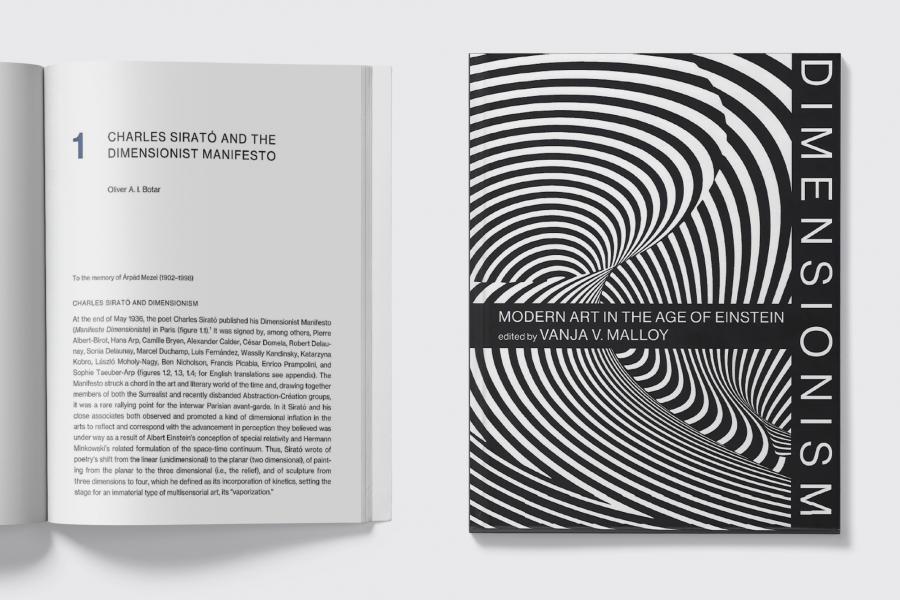
Vanja Malloy, ed., The Dimensionist Manifesto. Cambridge MA: The MIT Press, 2019.
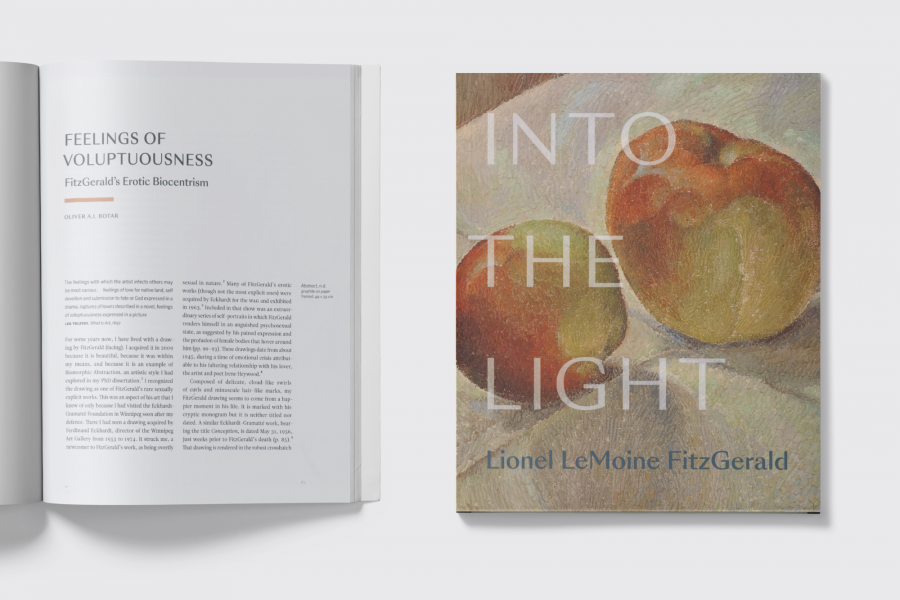
Sarah Milroy, Ian A. C. DeJardin and Michael Parke-Taylors, eds., Into the Light: Lionel LeMoine FitzGerald. McMichael Canadian Art Collection/Winnipeg Art Gallery, 2019.
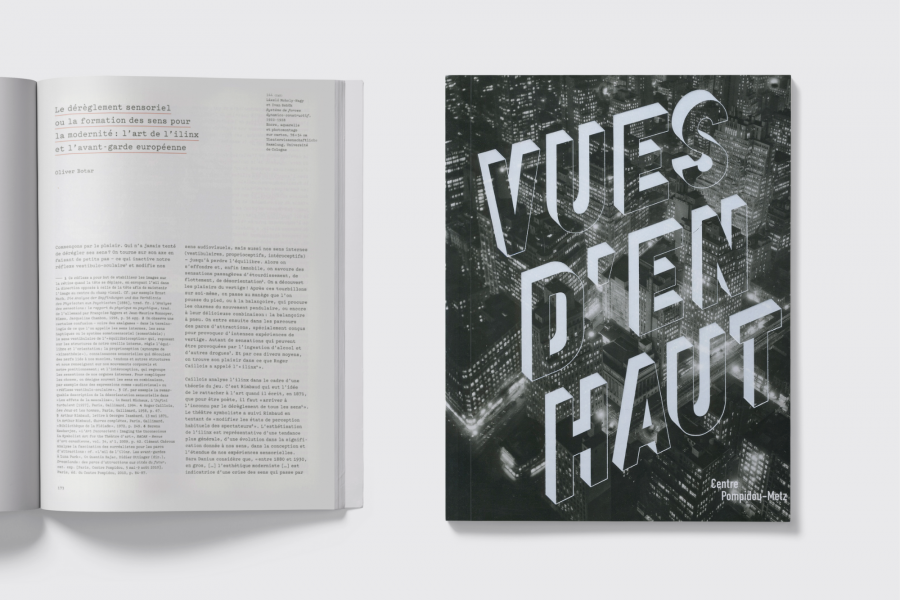
Angela Lampe, ed., Vues d’en Haut, Centre Pompidou-Metz, 2013.
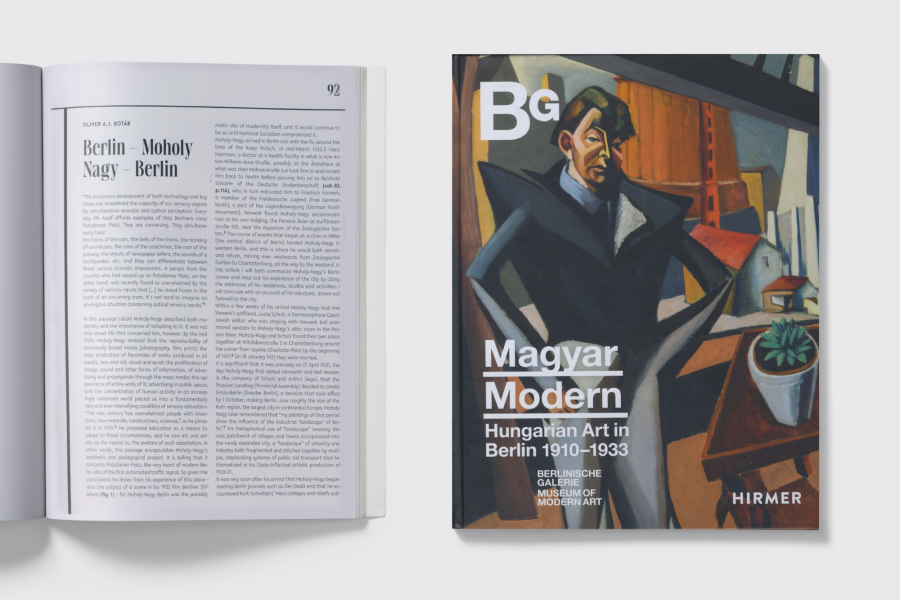
Ralf Burmeister, Thomas Koehler, László Báan, András Zwickl, eds., Magyar Modern - Hungarian Art in Berlin 1910-1933. Berlin - Hirmer, 2022
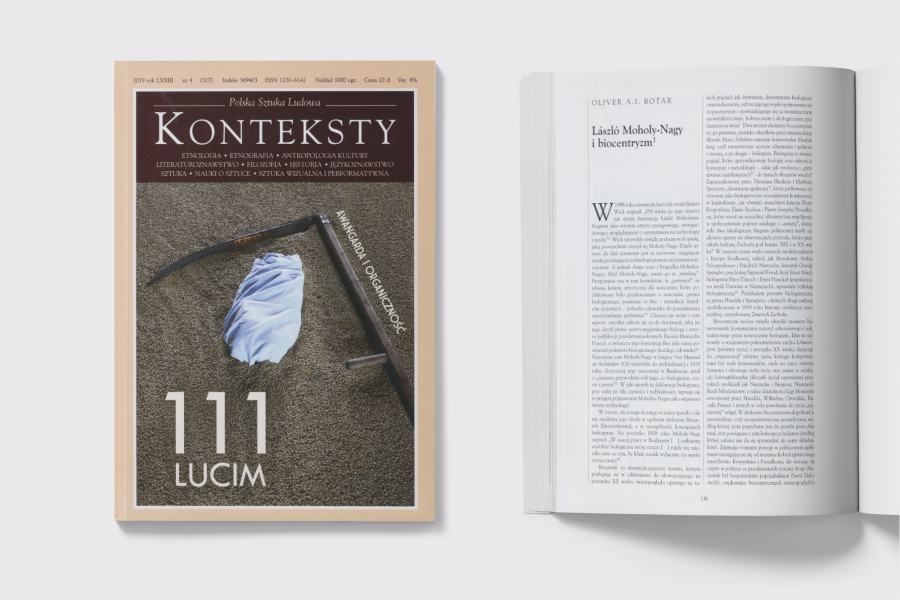
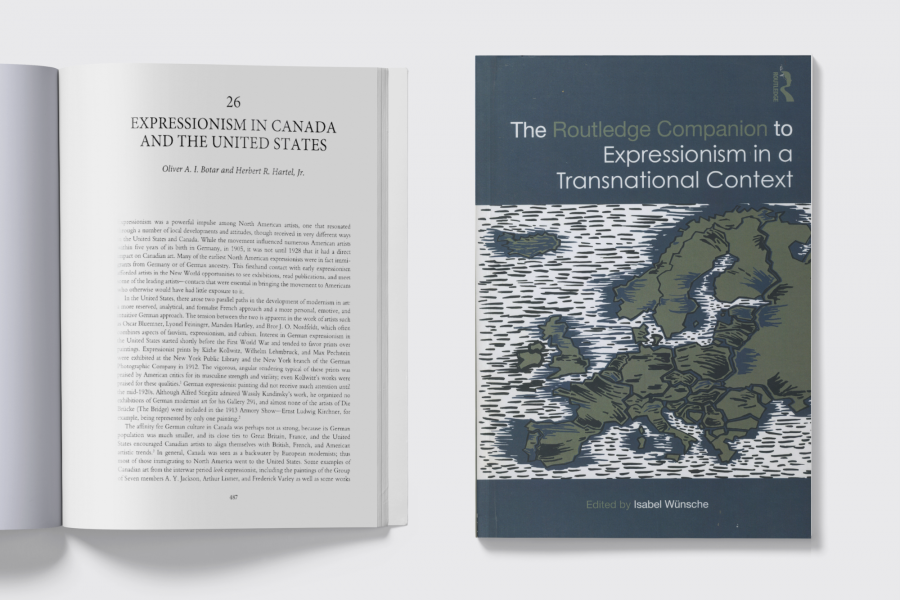
Isabel Wünsche, ed., Routledge Companion to World Expressionisms. London: Routledge, 2019.
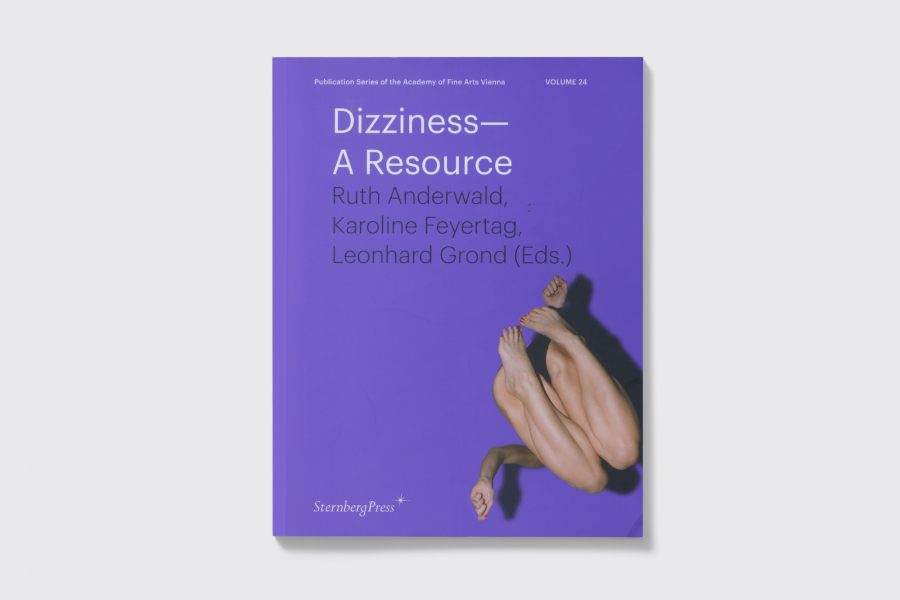
Ruth Anderwald, Karoline Feyertag and Leonhard Grond, eds., Dizziness: A Resource. Berlin: Sternberg Press/Vienna: The Academy of Fine Arts, 2019.
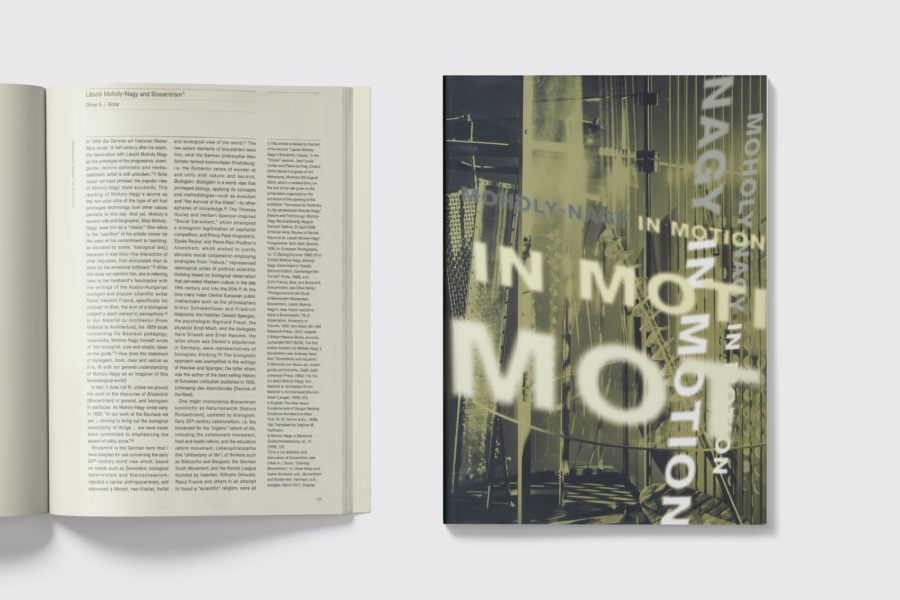
Toshino Iguchi, ed., Moholy in Motion, Kyoto: The National Museum of Modern Art, 2011.
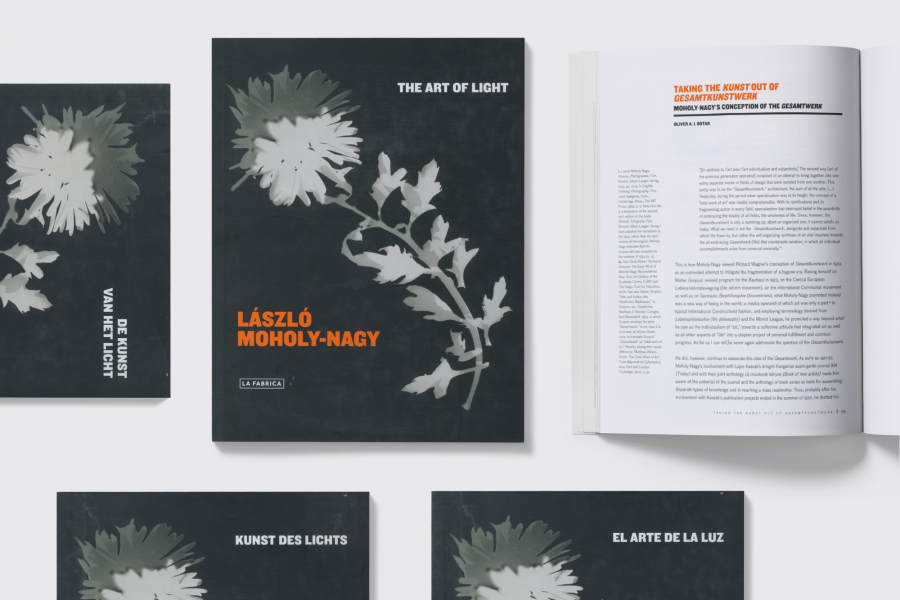
László Moholy-Nagy: The Art of Light, Madrid: La Fabrica Editorial, 2010.
(Also in Spanish, Dutch and German editions)
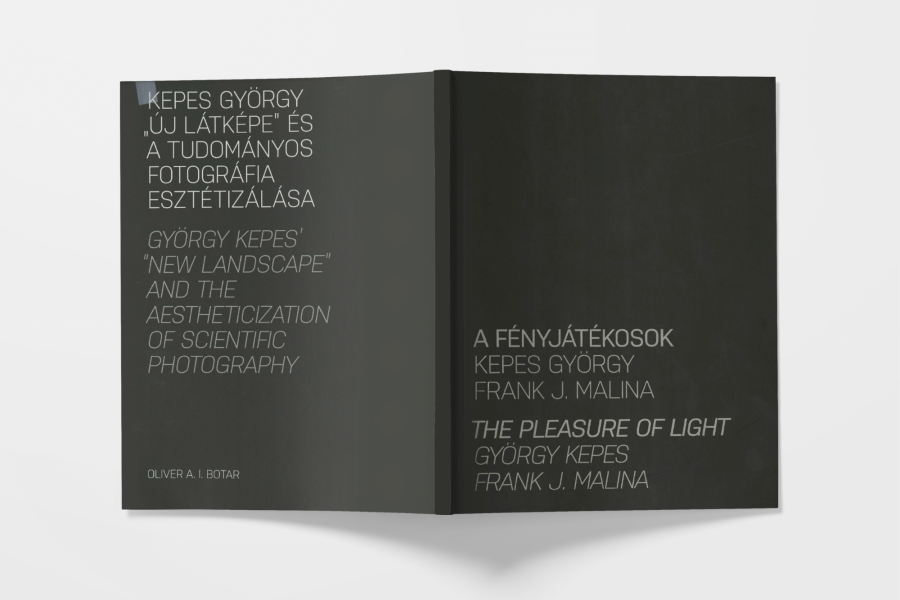
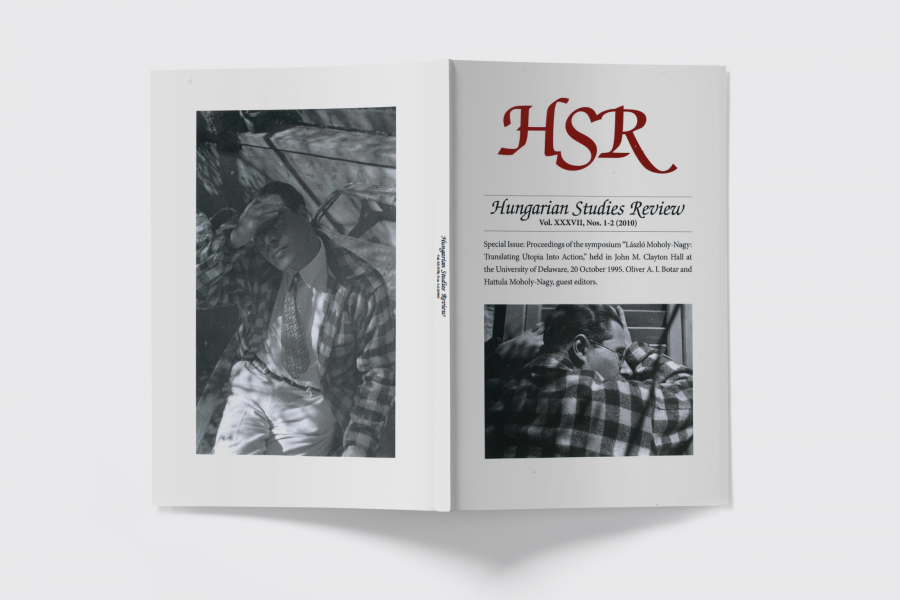
Hungarian Studies Review, 37, nos. 1-2 (2010)
Special Volume: Proceedings of the Conference "László Moholy-Nagy: Translating Utopia into Action."
Design: Kirk Warren

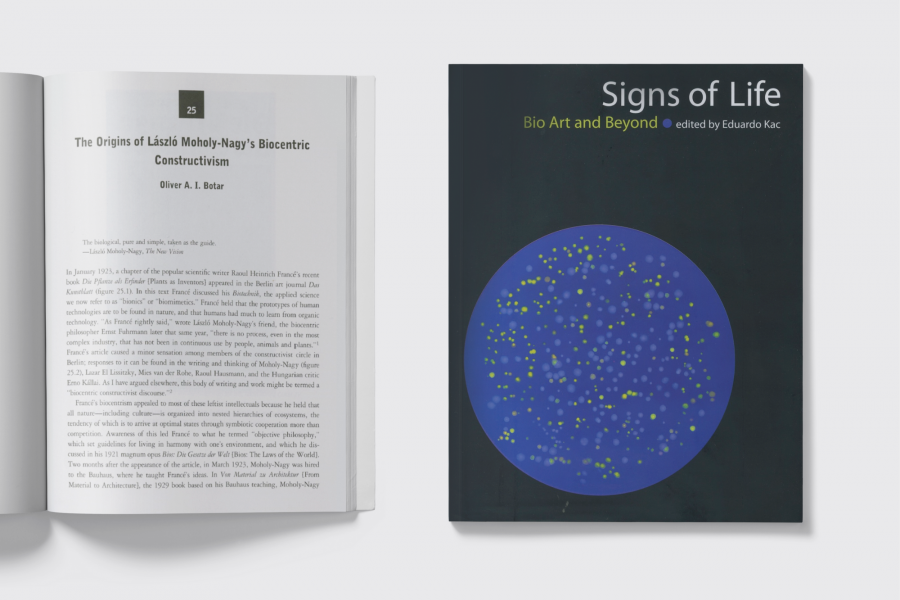
Eduardo Kac, ed., Signs of Life: Bio Art and Beyond. Cambridge, MA: The MIT Press, 2007.
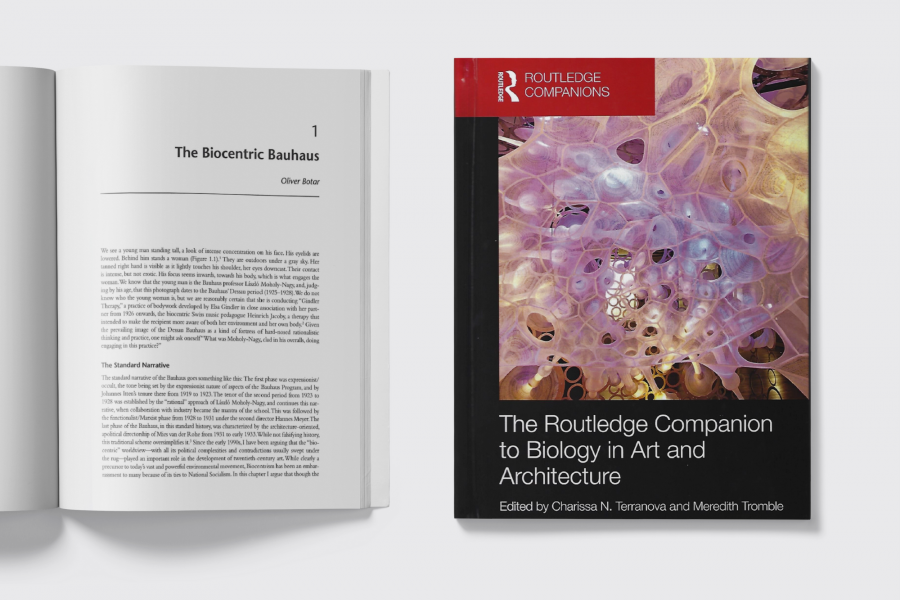

Early Twentieth-Century Artistic and Architectural Circles” in: Kalevi Küll, ed., “Jakob von Uexküll: A Paradigm for Biology and Semiotics,” a special issue of Semiotica, vol. 134, no. 1-4 (2001).
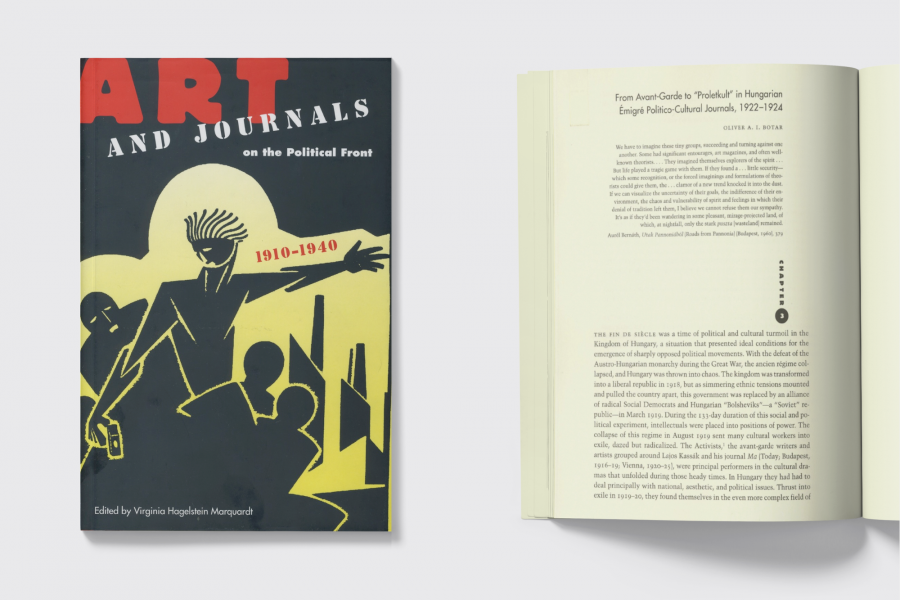
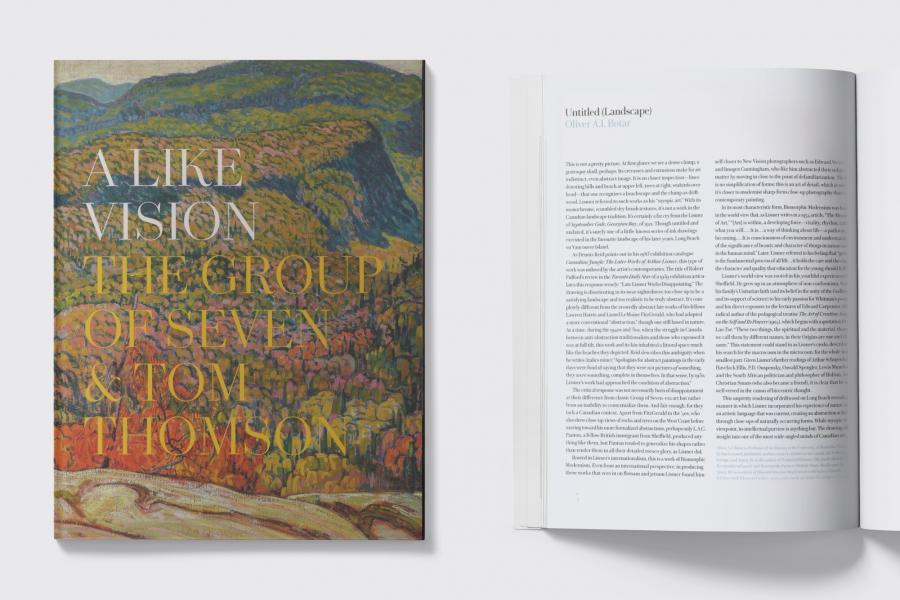
Ian A.C. Dejardin and Sarah Milroy, eds., A Like Vision: The Group of Seven and Tom Thomson, Kleinburg, ON: The McMichael Canadian Art Collection, 2020-21, 198-99.
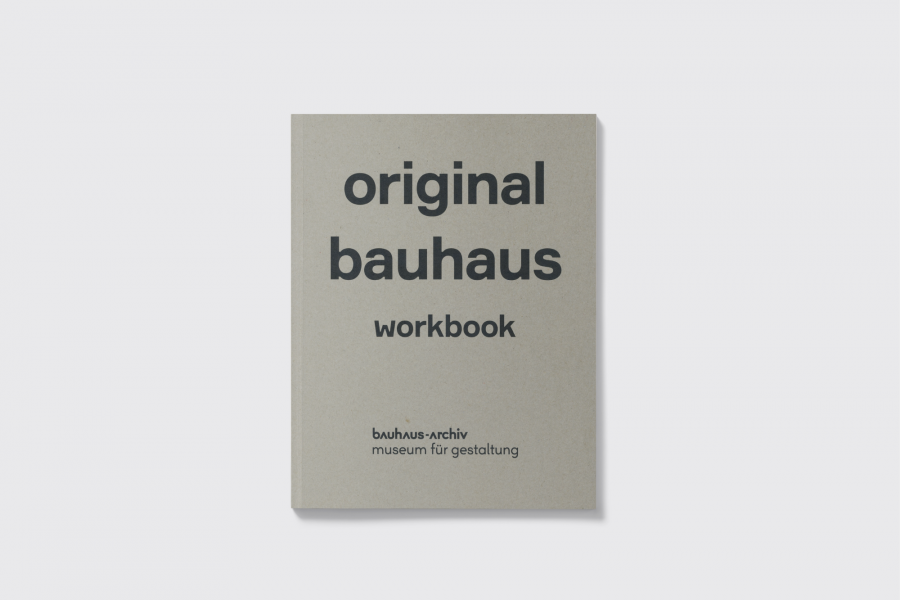
Friederike Hollaender and Nina Wiedemeyer, eds., Original Bauhaus: Workbook. Munich: Prestel; Berlin: Bauhaus-Archiv Museum für Gestaltung, 2019.
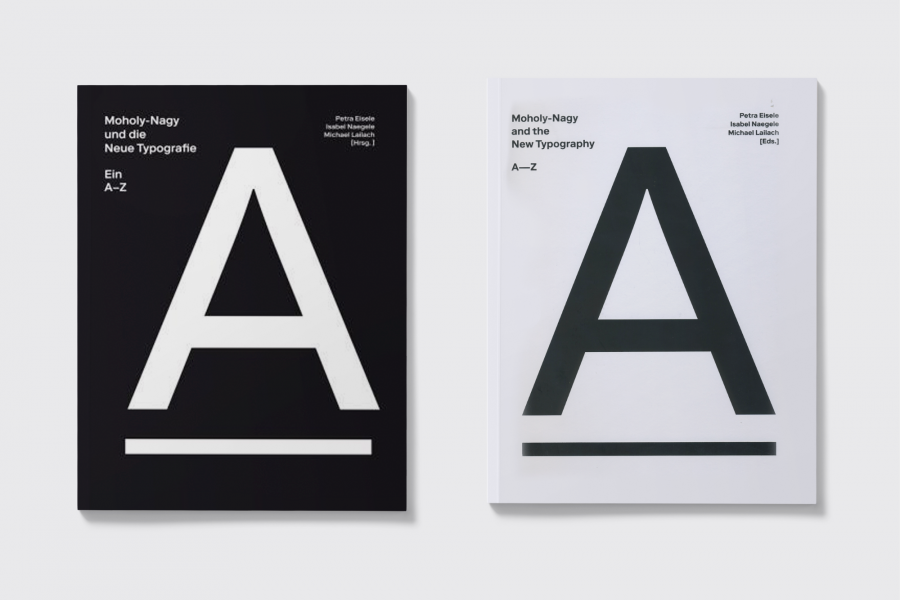
Petra Eisele, Isabel Naegele and Michael Laifach, eds., Moholy-Nagy and the New Typography A-Z, Mainz: Designlabor Gutenberg and Berlin: Kunstbibliothek Staatliche Museen zu Berlin (with Verlag Kettler), 2019.
Selected Exhibitions
Bauhaus (Canada) 101, School of Art Gallery, University of Manitoba, Winnipeg (2020)
Károly Tamkó Sirató and the Hungarian Avant-Garde (with Donna Gustavson), in association with: Dimensionism: Modern Art in the Age of Einstein, Vanja Malloy, curator, Jane Voorhees Zimmerli Art Museum, Rutgers University, 2019.
Starting with Rodin, Winnipeg Art Gallery, 2016-17.
Sensing the Future: Moholy-Nagy, die Medien und die Künste, Bauhaus-Archiv, Museum für Gestaltung, Berlin, 2014-15.
Sensing the Future: Moholy-Nagy, Media and the Arts, Plug In ICA, Winnipeg, 2014.
“An Art at the Mercy of Light” Recent Works by Eli Bornstein, Mendel Art Gallery, Saskatoon, 2013; School of Art Gallery, UofM, 2013-14.
A Bauhausler in Canada: Andor Weininger in the ‘50s, The Robert McLaughlin Gallery, Oshawa, 2009.
Természet és technika: Az újraértelmezett Moholy-Nagy 1916-1923 [Nature and Art: Moholy-Nagy Reconsidered 1916-1923], Janus Pannonius Museum, Pécs, 2007- 08, Hungarian National Gallery, Budapest, 2008.
The Magyar Imagination: Selections from the Salgo Trust Donation of Hungarian Art, The Jane Voorhees Zimmerli Art Museum, Rutgers University, 2008.
Technical Detours: The Early Moholy-Nagy Reconsidered, Gallery of the City University of New York Graduate Center, New York, 2006; Jane Voorhees Zimmerli Art Museum, Rutgers University, 2006.
From Bioromanticism to Neo-Dada: Julius Marosan's First Five Years in Toronto, 1957-1962, Robert McLaughlin Gallery, Oshawa, 1995
Julius Marosan: Art in Emigration, 1957-199,. Ernst Museum, Budapest, 1994.
Tibor Pólya and the Group of Seven / Hungarian Art in Toronto Collections, 1900-1949, Justina M. Barnicke Gallery, Hart House, University of Toronto, 1989.
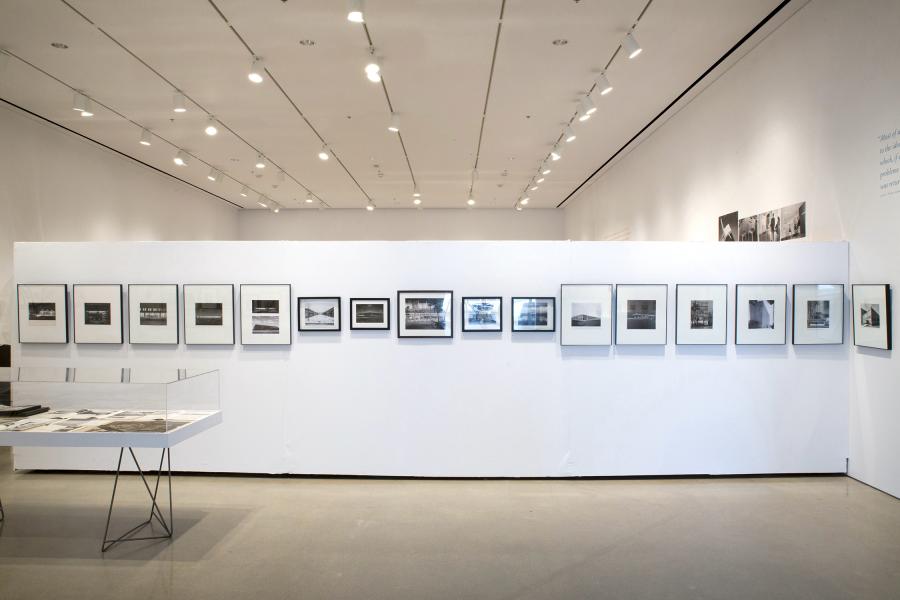
School of Art Gallery, 2020
Photo: Kristiane Church
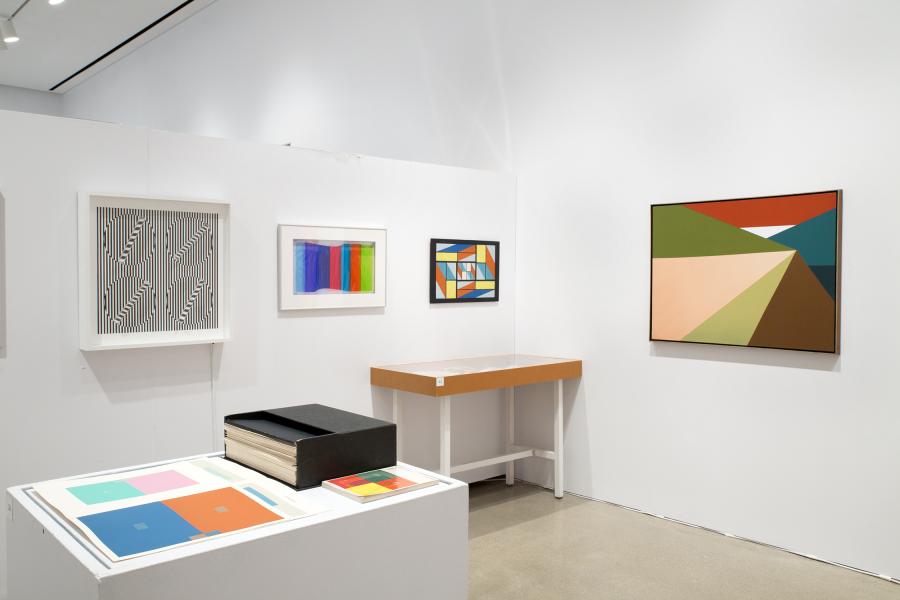
Photo: Kristiane Church
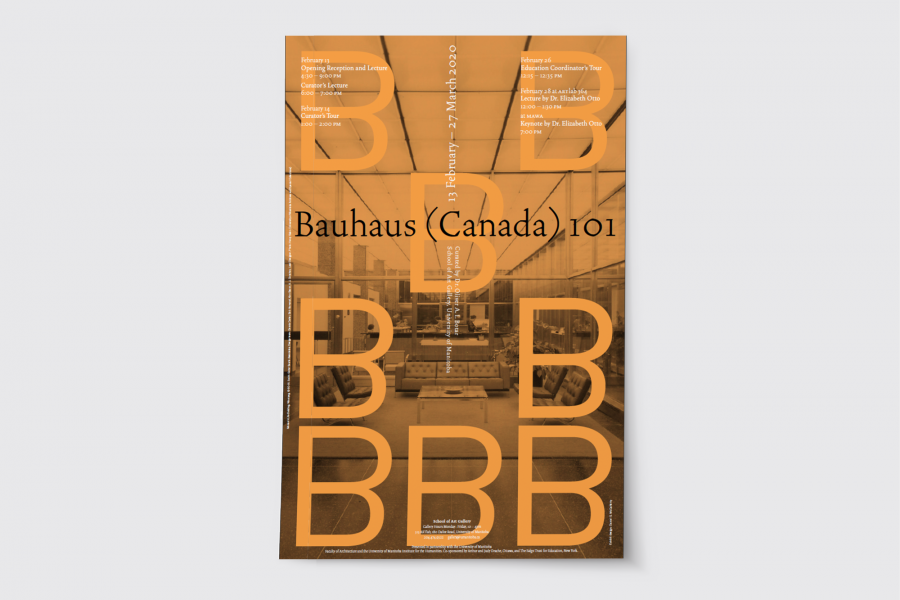
School of Art Gallery, 2020
Design: Prof. Daniel McCafferty

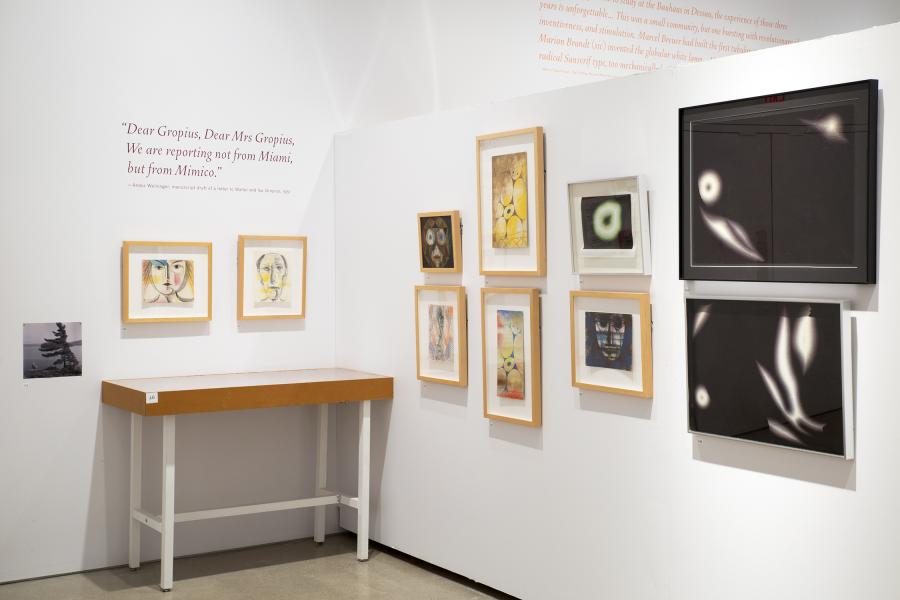
Photo: Kristiane Church
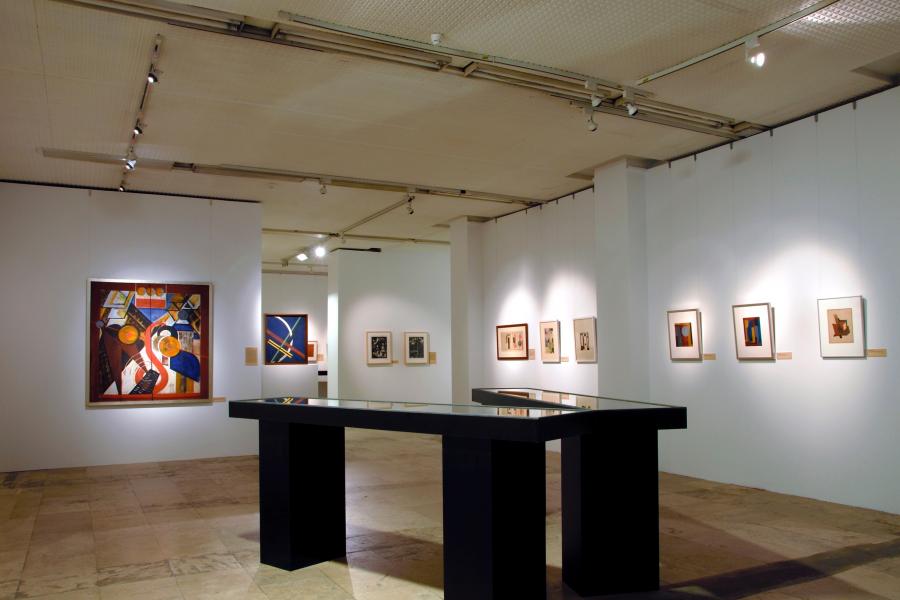
Hungarian National Gallery, 2008
Photo: Zsuzsa Bokor
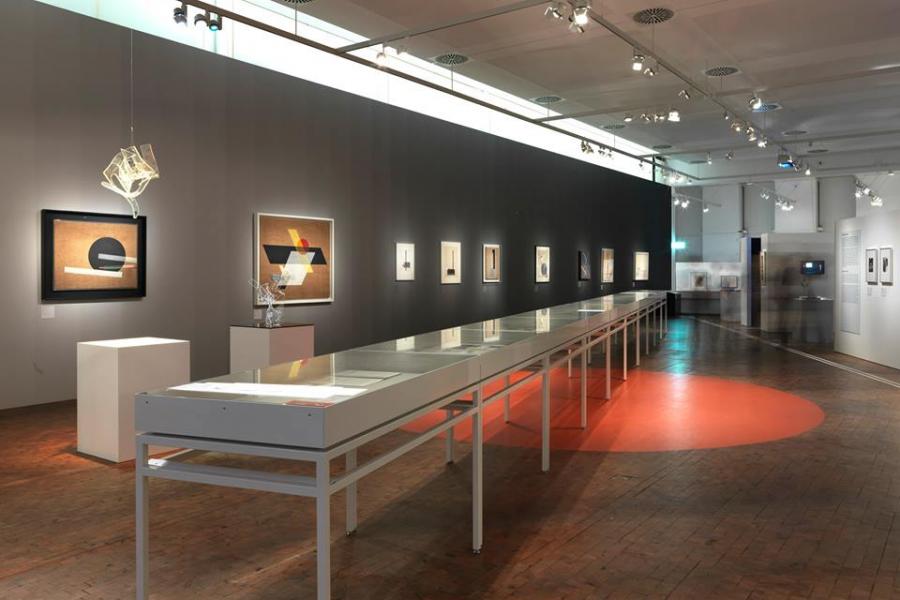
Bauhaus-Archiv Museum für Gestaltung, Berlin, 2014-15
Photo: Markus Havlik
Installation design: Louise Wittofft and Rodney Latourelle

Mendel Art Gallery, Saskatoon, 2013
Photo: Troy Mamer
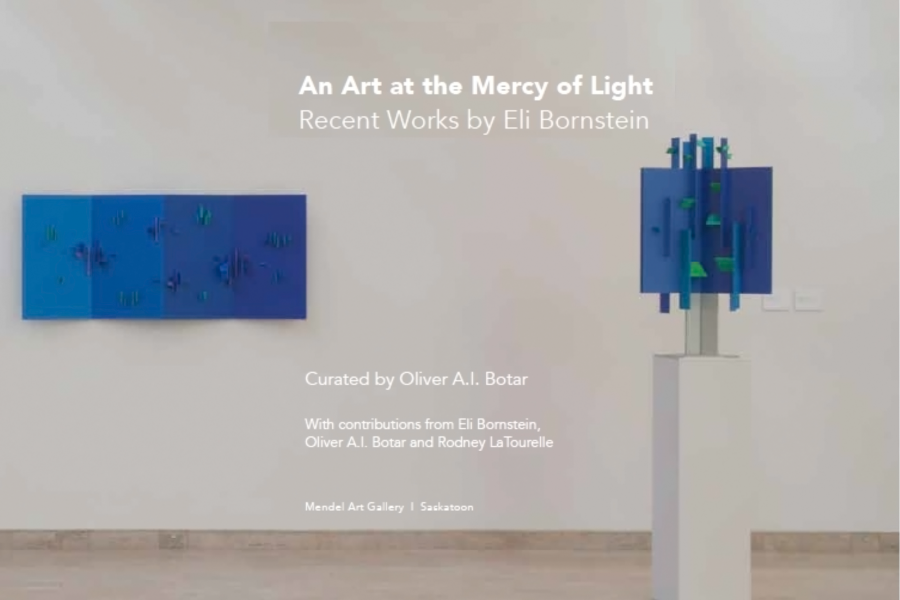
Mendel Art Gallery, Saskatoon, 2013
Photo: Troy Mamer
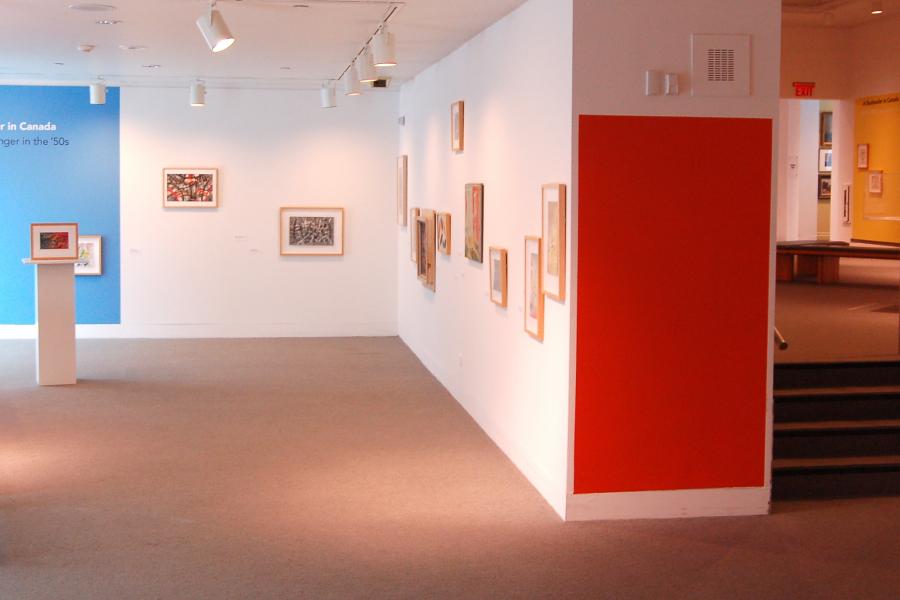
The Robert McLaughlin Gallery, Oshawa, 2009
Photo: Oliver Botar
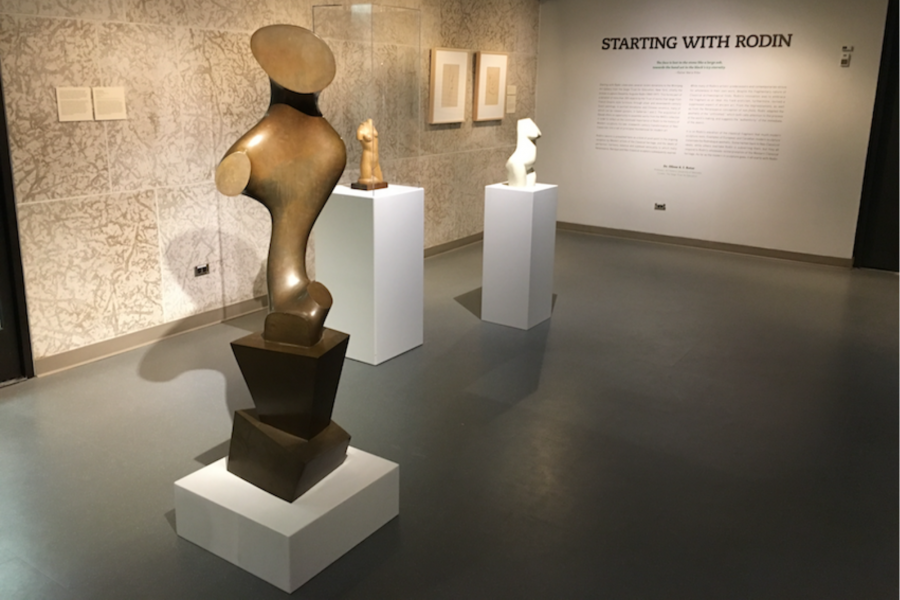
Winnipeg Art Gallery
November 2016 - March 2017
Photo: Oliver Botar
Selected Keynote Addresses, Plenaries, Conference Papers and Lectures:
“Nature-Centric Thinking Among Canadian Modernist Artists: Bertram Brooker, Lyonel LeMoine FitzGerald, Arthur Lismer,” First Plenary held for the Central European Association for Canadian Studies: 9th Triennial Conference: Canadian Landscapes, Budapest, Károli Gáspár University of the Reformed Church in Hungary (28.10.2022)
“Biocentrism and the Social Good: An Alternative Lense Directed Towards the History of the Bauhaus,” Arquitectonics: Mind, Land and Society. 20th International Conference. Barcelona, 01.06.22 (virtual).
“Some Questions and Observations on the Comprehension of Moholy-Nagy’s Writings,” in: “What Are Bauhaus Media?” as part of: “Bauhaus Media: 200 Years of Bauhaus,” Radcliffe Institute Accelerator Workshop, Harvard University, 19.04.2021.
“Sensory Derangement or Training the Senses for Modernity: The Art of Ilinx and the European Avant-Garde,” as part of “Mileux Bauhaus: An Interdisciplinary Celebration of the 10th Anniversary of the Founding of the Bauhaus School,” Mileux Institute for Arts, Culture, Technology, Concordia University, 14.11.2019.
“László Moholy-Nagy’s Projection Spaces,” My Bauhaus: Transmedial Encounters, J. Irwin Miller Symposium, Yale School of Architecture, 02.11.2019.
“Sensing the Future: Moholy-Nagy, Media and the Arts,” Keynote Address, international symposium: “From Bauhaus to Sensfactory,” Muffathalle (Munich) 07.09.2019.
“The Visual Culture (or lack thereof) of the Winnipeg General Strike,” 1919 Winnipeg General Strike: Centenary Conference, University of Winnipeg, 09.05.2019.
“Charles Sirato’s Journey to the Dimensionist Manifesto and Beyond,” “Dimensionism.” Scholar’s Day in association with the exhibition “Dimensionism: Modern Art in the Age of Einstein,” Mead Art Museum, Amherst College, Amherst, MA, 29.04.2019.
“György Kepes’ New Landscape and the Cybernetics of Nature,” György Kepes’ Vision + Value Series and the Origins of Cybernetic Art,” Workshop, University of Texas, Dallas, 12.10.2018.
“A Magyar Nemzeti Galéria-féle Moholy-Nagy Kép: Egy kapocs a Dada és Konstruktivista művei közt” [The Hungarian National Gallery Moholy-Nagy Painting: A Link Between his Dada and Constructivist Works]. Keynote Address, “Moholy-Nagy Szimpozium,” Hungarian National Gallery, Budapest, 12.04.2018.
“Playing the Field: Art in Winnipeg/Treaty One Territory, 1913-1960,” Alternative Histories: A Symposium, University of Manitoba Institute for the Humanities, 07.03.2017.
“Sensory Derangement or Training the Senses for Modernity: The Art of Ilinx and the European Avant-Garde,” Keynote Address for “Ceilings and Dreams: The Architecture of Levity,” Virginia Polytechnic Institute and State University, Alexandria, 22.04.2017.
“Our Representative in Germany: László Moholy-Nagy,” 34th György Ránki Hungarian Chair Conference, Department of Central European Studies, University of Indiana, Bloomington. 14.04.2007.
“Raoul Francé: Navigating the Nazi Ecosystem,” In the session: “The Politics of Biocentrism: How Creativity Masks, Transforms, or Enhances the Politics of the Ecological Movement,” Society for Literature, Science and Art Conference, Atlanta, 04.11.2016.
“Alfréd Kemémy: An Unknown Art Historian’s Difficult Career Come to Light,” Hungarian Studies Association of Canada Annual Conference, Congress of the Humanities and Social Sciences, University of Calgary, 29.05.2016.
“The Realization of Moholy-Nagy’s Polycinema,” in: “Moholy-Nagy: Art for a New Century,” Solomon R. Guggenheim Museum, New York, 11.06.2016.
Participant in “Moholy-Nagy Scholars’ Day,” lectures given in front of artworks at the Solomon R. Guggenheim Museum’s exhibition “Moholy-Nagy: Future Present”, 23.06.2016.
Lecture and panel discussion on the occasion of the launch of the facsimile edition of telehor and of the special Russian edition of telehor, Garage, Moscow. 19.09.2015.
“Moholy-Nagy: Art as Information/Information as Art,” Local Contexts/International Networks: Avant-Garde Magazines in Central Europe 1910-1935,” Kassák Museum, Budapest 17.09.2015.
“Hungarian Treasure: Silver from the Nicolas M. Salgo Collection,” Wrightsman Exhibition Gallery, Metropolitan Museum of Art, New York (with Wolfram Koeppe) 13.04.2015.
“Biocentric Constructivism,” In: “Bios: Biology in Art, Architecture and Design,” College Art Association, New York, 13.02.2015.
“Sensing the Future: László Moholy-Nagy, Media and the Arts,” Public lecture held at the Embassy of Canada, Berlin, 5.12.2014.
“Moholy-Nagy as Expressionist,” “Storm and Spirit Symposium” organized for the opening of Storm and Spirit, Winnipeg Art Gallery, 14.11.2013.
“telehor: International Review of Visual Culture, Brno 1936,” European Network for Cinema and Media Studies (NECS), Conference: “Media Politics / Political Media,” Prague (With Klemens Gruber), 21.06.2013.
“Moholy-Nagy and Biocentrism,” Keynote Address given to the international symposium “Moholy-Nagy Reconsidered,” The National Museum of Modern Art, Kyoto, 23.07.2011.
“Biocentrism: A Central European Intuition,” Wirth Institute for Austrian and Central European Studies, University of Alberta and Department of Art and Design, University of Alberta Faculty of Fine Art, 19.11.2010.
“László Moholy-Nagy and Feminism: The Origins of his Photographic Practice,” in the series “Focal Point: Photography and the Social Construct,” Platform Centre for Digital Arts, Aqua Books, Winnipeg, 23.09.2010.
“Moving Abstraction into the Next Dimension: The Dimensionist Manifesto, Paris, 1936,” Minnesota State University, Moorhead, 13.09.2010.
“The Nexus of Science, Art and Technology: György Kepes’ ‘New Landscape’,” Keynote Address, “The Pleasure of Light, György Kepes and Frank Malina at the Intersection of Art and Science,” Ludwig Múzeum, Budapest, 03.09.2010.
“A Bauhausler in Canada: Andor Weininger,” Workshop of the working group on design history, Faculty of Liberal Arts, Saitama University, Saitama City, Japan, 13.02.2010.
“Ernő Kállai, László Moholy-Nagy, György Kepes and the Aestheticization of Scientific Photography,” Hungarian Studies Association of Canada Annual Conference, Congress of the Humanities and Social Sciences, Concordia University, Montreal, 29.05.2010.
“The Dynamic-Constructive Synthesis: Moholy-Nagy on the Road to Weimar,” in: “Hungarians and the Bauhaus,” Museum of Modern Art, New York, 20.11.2009.
“I am KURI-ous (Red White Green): Hungarians and the Bauhaus Shift, 1922-23,” Global Bauhaus: The Conference. Martin-Gropius-Bau, Berlin and Bauhaus Dessau, 22.09.2009.
“László Moholy-Nagy, Biocentrism, and the Bauhaus: Utopian Conceptions of Aesthetics and Technology,” Institut für Theater-, Film- und Medienwissenschaft, University of Vienna, 20.04.2009.
“Kinetic-Constructive System: Structure with Movement Track for Play and Conveyance (1922-28) – Moholy-Nagy’s Proposal for a Participatory, Immersive Art Environment,” “Environments réactifs: L’architecture, la technologie et la sense,” Séminaire International Phyllis Lambert, École d’architecture, Université de Montréal, 28.03.2009.
“The Bauhaus and Its Artists: László Moholy-Nagy,” The Research Institute of European Heritage, International Cultural Centre, Cracow. Poland, 28.04.2008.
“‘The biological, pure and simple, taken as the guide’: Moholy-Nagy and Biocentrism,” Moholy-Nagy Symposium, Hungarian National Gallery, Budapest, 25.04.2008.
“From Bauhaus to Our House in Etobicoke: Andor Weininger in Toronto,” Untold Histories. The Gail and Stephen A. Jarislowsky Institute for Studies in Canadian Art Public Conference Series, Winnipeg Art Gallery, 28.03.2008.
“Biocentrism,” Keynote Address given for the Ph.D. Summer School, Dept. of Art History, University of Jyväskylä, Finland. 21.08.2007.
“The Biocentric Bauhaus,” Canadian Society for History and Philosophy of Science, Congress of the Humanities and Social Sciences, University of Saskatchewan, Saskatoon, 28.05.2007.
“The Modernist Revolution: Differing Modes of the Memorialization of 1956 in the Works of Two Hungarian-Canadian Modernists,” “The 1956 Hungarian Revolution 50 Years Later Canadian and International Perspectives, Panel on the Arts and Culture,” University of Ottawa, Institute for Canadian Studies, 12.10.2006.
“Reading Moholy-Nagy and Kemény’s 1922 Manifesto Through Bogdanov’s Tektology,” “Detours of Technology: Insights into the Hungarian and Weimar German Oeuvres of László Moholy-Nagy,” Rutgers University, New Brunswick, N.J., 28.10.2006.
“Detours techniques: L’oeuvre de László Moholy-Nagy, 1918-1923.” Talk give at the Institut Hongrois, Paris, 07.06.2006.
Participant, Round Table Discussion: “Abstraction Across Media: Albers and Moholy-Nagy,” In conjunction with “Moholy-Nagy and Albers,” Tate Modern, London, 02.06.2006.
“Moholy-Nagy: Biocentrism and Photography,” Moholy-Nagy Symposium, Collegium Hungaricum Berlin and Bauhaus-Archiv – Museum für Gestaltung, Berlin, 21.06.2006.
“Biologism and Modernism: The Case of László Moholy-Nagy,” International Conference “Art and Metaphysics,” International University, Bremen, Germany, 19.05.2006.
“Fin-de-siècle Biologistic Neo-Romanticism and its Political Dimension,” “Growing the Modern: Organic Models 1850-1914,” College Art Association, Boston, 24.02.2006.
“The Biocentric Nexus: Raoul Francé and Modernist Architecture in the Weimar Republic.” Lecture series: “Auf der Suche nach einer Theorie der Architektur,” Hocschule Bildende Kunst, Hamburg, 20.06.2005.
“László Moholy-Nagy’s Biocentric Utopia,” “Utopia,” Jean-Louis Cohen and Pierre du Prey, Chairs, CIHA (World Congress of Art Historians), Montreal, 25.08.2004.
“László Moholy-Nagy and Károly Tamkó Sirató: The Mirroring of Identity Construction,” Hungarian Studies Association of Canada/American Hungarian Educators’ Association, Congress of the Humanities and Social Sciences, University of Toronto, 26.05.2002.
“Raoul Francé and National Socialism: A Problematic Relationship,” 5th International Congress of Hungarian Studies, Jyväskylä, Finland, 08.2001.
“Becoming Active Partners with Moholy-Nagy: The Theory and Practice of a Non-Visual Art of Experience in the `Dynamic-Constructive System of Energies’,” Study Centre, Canadian Centre for Architecture, Montreal, 30.03.2001.
“Mies and Biocentrism,” held in the graduate seminar of Alessandra Ponte, Dept. of Architectural History, Princeton University, 12.03.2001.
“László Moholy-Nagy and `Dynamic’ Constructivism,” Dept. of Fine Art, Queens University, Kingston, Ontario, 07.02.2001.
“Raoul Francé and the Weimar German Avant-Garde.” Seminar held at the Canadian Centre for Architecture, Montreal (November 2000)
“Biozentrik und Modernismus,” Zentrum für Literaturforschung, Berlin 22.11.1999.
"Proposing Biocentrism as a Category in the History of Ideas," Institute for the History and Philosophy of Science and Technology, University of Toronto, 25.02.1998.
“‘The ‘Dynamic-Constructive System of Energies’ and the Metaphor of Energy in the Work of László Moholy-Nagy,” “The Energies of Modernism,” Bruce Clarke, Chair, Society for Literature and Science, Atlanta, Georgia, 10.2000.
“Mies and Biocentrism,” “Mies van der Rohe,” Phyllis Lambert and Cammie McAtee, Chairs. Society of Architectural Historians, Houston, Texas, 04.1999.
“Lazar El Lissitzky and Raoul H. Francé,” “Interpreting El Lissitzky: New Perspectives,” Getty Research Institute for the History of Art and the Humanities, Los Angeles, 12.1998.
“Biocentrism: Architecture, Art and Ideologies of Nature in Weimar Germany,” "Glass Architecture: The Delirium of New Technologies,” Detlef Mertins, Chair. “Visions of Light: The Phenomenon of Glass Architecture in the 20th Century,” Goethe Institute / Design Exchange, Toronto, 02.1997.
“‘Biocentrism,’ the ‘New Vision,’ and the Aestheticization of Scientific Photography in Weimar Germany,” “Modern Art and Science: Where Does Art History Stand?” Linda D. Henderson, Chair. College Art Association Conference, San Antonio, Texas, 1995.
“Constructing a History of Biocentric Modernism: László Moholy-Nagy, Scientific Imagery and the ‘New Vision’,” “Art and Nature,” Universities Art Association of Canada, University of Guelph, 1995.
“László Moholy-Nagy: A ‘Biocentric’ Artist?” “Moholy-Nagy: Translating Utopia into Action,” Stephen Mansbach, Chair. Moholy-Nagy Centenary Symposium, University of Delaware, Newark, 20.10.1995.
“Kassák, Hungarian Activism and Politics: The Untold Story,” Universities Art Association of Canada, University of Victoria, 1992.
“Kállai and the Natural Sciences in Weimar Germany,” Kállai Centenary Symposium, Hungarian Academy of Sciences and Goethe Institut, Budapest, 1991.
“The Hungarian Avant‑Garde in Context,” in association with Free Worlds, Art Gallery of Ontario, Toronto, 11.1991.
“Constructivism and the Hungarians: Some Theoretical Problems,” Austrian Cultural Institute, Budapest, 1985.
“Modernism and Hungarian Culture: Is there a Connection?” Hungarian Studies Conference, Columbus, Ohio, 05.1984.
"Politics and the Hungarian Avant-Garde," Trent University, Department of Cultural Studies, 1983.
Selected Reviews
Gábor Ébli, National Museums and Civic Patrons: Practices of Cultural Accumulation in Central and Eastern Europe. Hungarian Cultural Studies, vol. 14, 2021.
“Történelem és természet: Böröcz András kiállítása“ [review of exhibition by András Böröcz at Műcsarnok/Kunsthalle Budapest). Új művészet, no. 1, January 2019, 38-41.
Éva Forgács, Hungarian Art: Confrontation and Revival in the Modern Movement, Hungarian Studies, vol. 10, 2017, 194-97.
András Szánto, curator, “With the Eyes of Others: Hungarian Artists of the Sixties and Seventies”
(Exhibition held at the Elizabeth Dee Gallery, New York, 02.05. – 11.08.2017, Balkon (Budapest), 2017.
Louise Duguay, Pauline Boutal: An Artist’s Destiny, Great Plains Quarterly, 2017.
“Films by László Moholy-Nagy,” Journal of the Society of Architectural Historians, vol. 67, no. 3, September 2008, 460-462.
“Interdisciplinarity on the Road at Documenta 11,” Warehouse (Faculty of Architecture, University of Manitoba), 11, 2002, 114-15.
Review article on publications concerning Hungarian art and architecture, The Structurist, no. 41-42, 2001-2002, 115-124.
András Ferkai, The Architecture of Pest Between the World Wars (Budapest: MÉÉMKT, 2001), Centropa(New York City) no. 2, vol. 3, September 2002, 235-39.
“Documenta 11", Border Crossings 83, vol. 21, no. 3, 2002, 95-100.
“The Phenomenon of the Ukrainian Avant-Garde 1910-1935,” (Winnipeg Art Gallery, 2001-02) Border Crossings 81, vol. 21, no. 1, 2002, 74-77.
Hubertus Gassner, ed. Wechselwirkungen. Ungarische Avantgarde in der Weimarer Republik (Marburg: Jonas, 1986). The Structurist 27/28, 1987/88.
Elizabeth Hight, curator, “Moholy‑Nagy: Photography and Film in Weimar Germany” (Exhibition at the Art Institute of Chicago, 1986). Szivárvány [Rainbow] (Chicago), October 1986, 151-152.
Krisztina Passuth, Moholy‑Nagy (London: Thames and Hudson, 1984). The Structurist 25/26, 1985‑86, 146-149.
Paul Várnai, ed., Hungarian Short Stories (Toronto: Exile Editions 1983), Antigonish Review, Winter 1984.
Nándor Dreisziger, Struggle and Hope: The Hungarian-Canadian Experience and Howard and Tamara Palmer, “The Hungarian Experience in Alberta” (special issues of Hungarian Studies Review), Toborzó(Edmonton), March 1983.
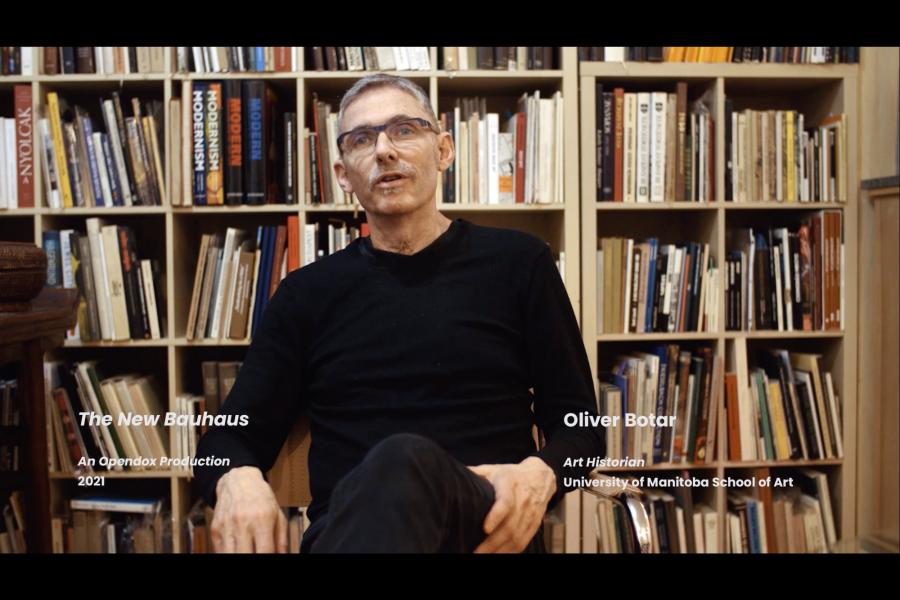
The New Bauhaus
An odyssey through the life and legacy of László Moholy-Nagy, the innovative artist and educator whose pioneering approach to integrating technology into design continues to influence and inspire.
The New Bauhaus premiered as the opening film for the Architecture Design Film Festival in New York and the opening film for the architecture program at Chicago International Film Festival (2021). The film is produced by Opendox.
- Director: Alysa Nahmias
- Producers: Petter Ringbom, Erin Wright, Alysa Nahmias
- Writers: Alysa Nahmias & Miranda Yousef, ACE
- Editor: Miranda Yousef, ACE
- DoP: Petter Ringbom

